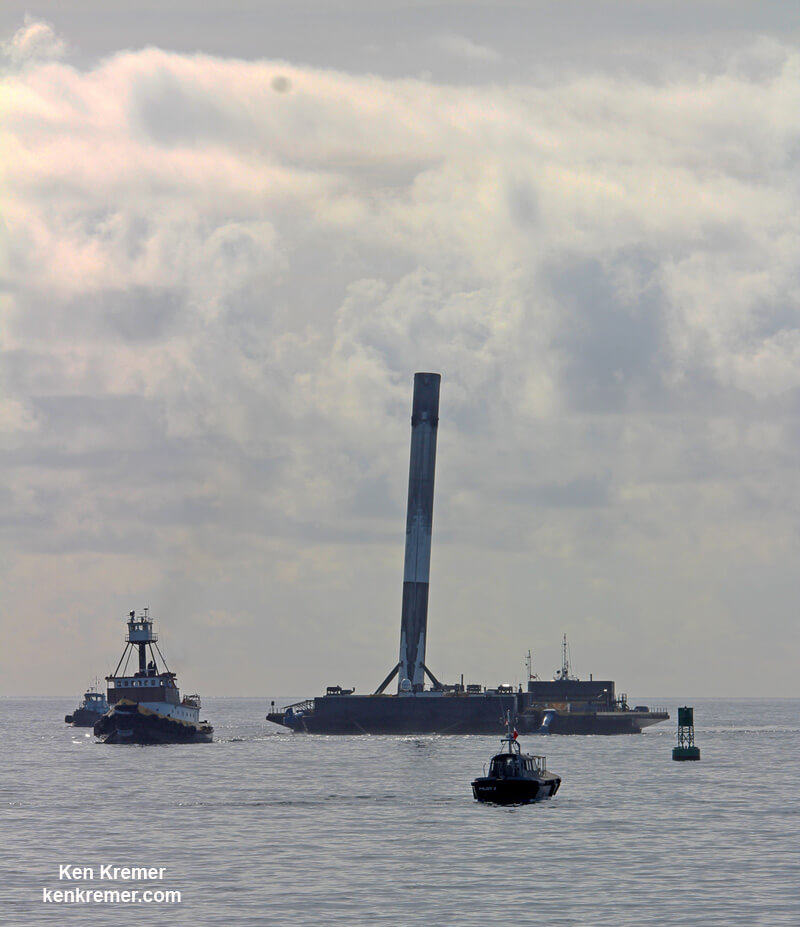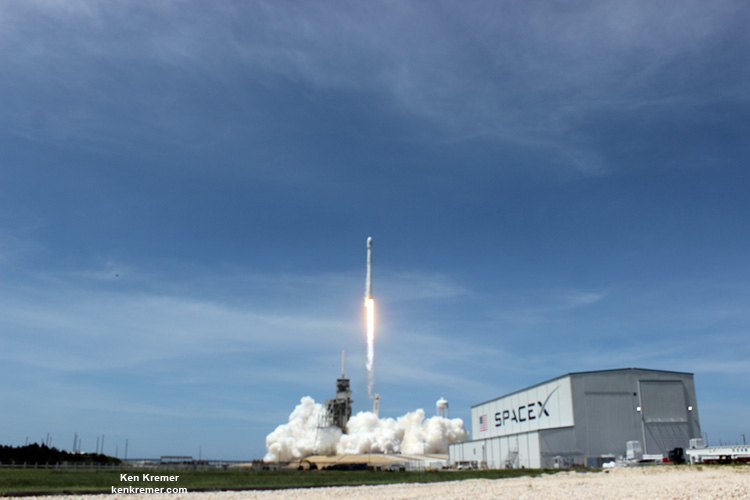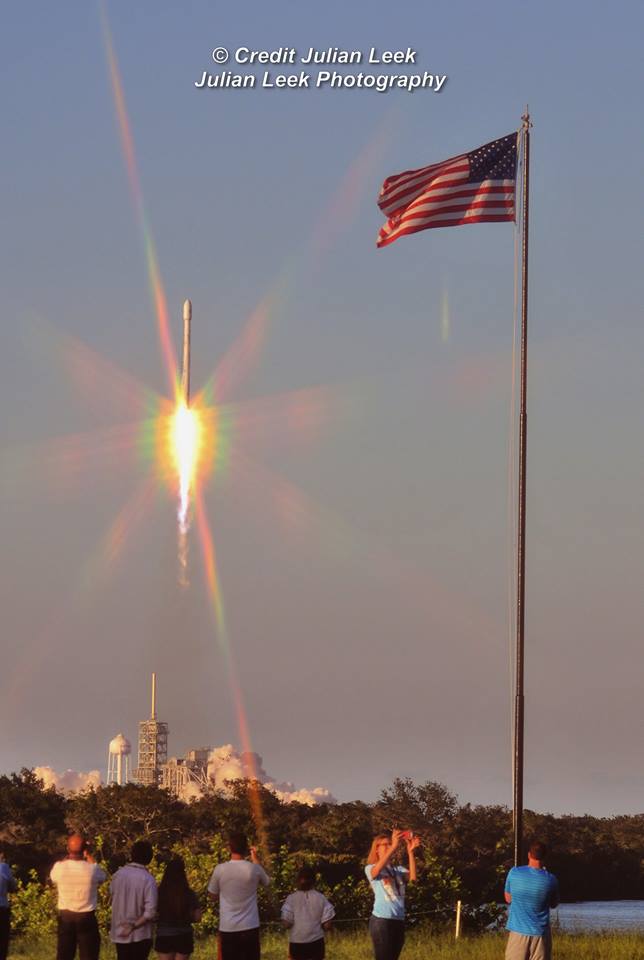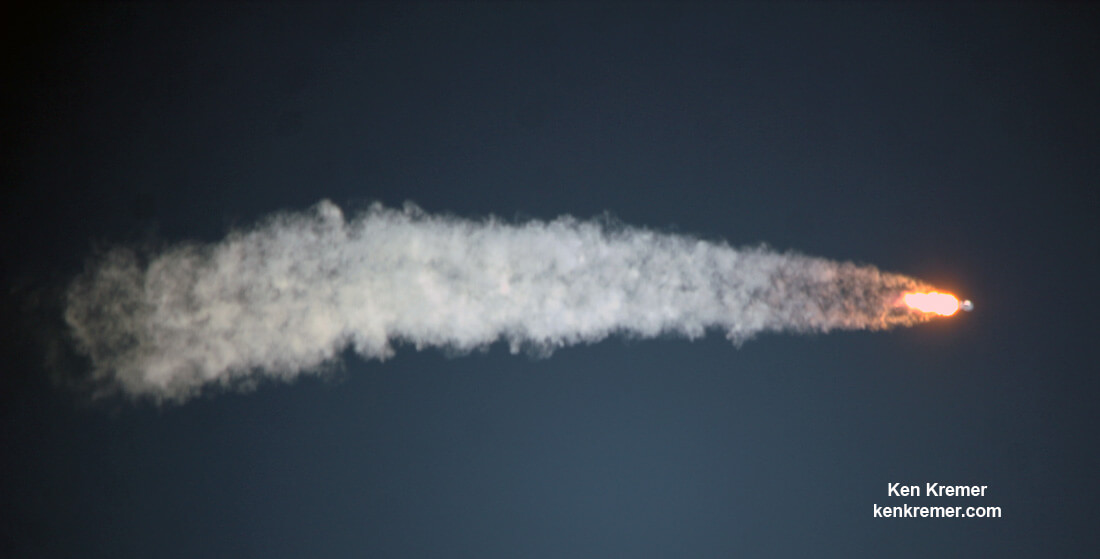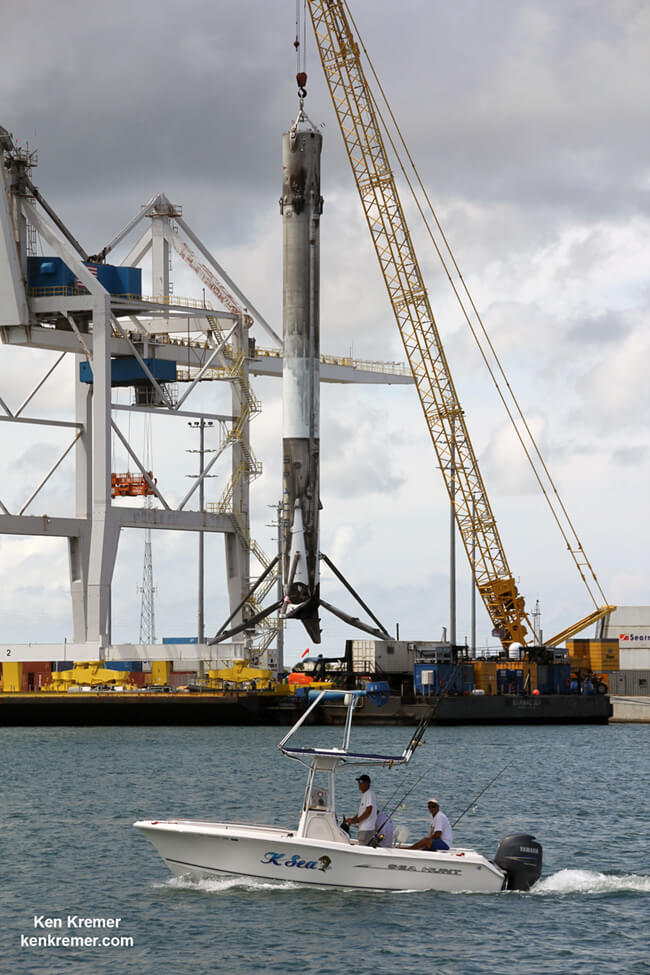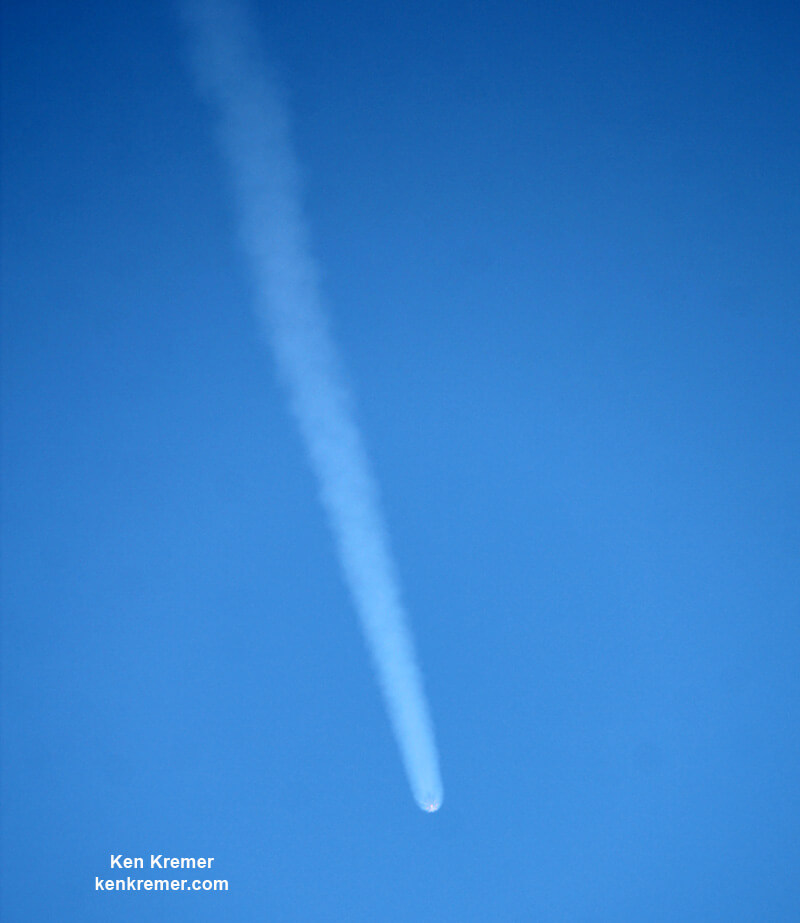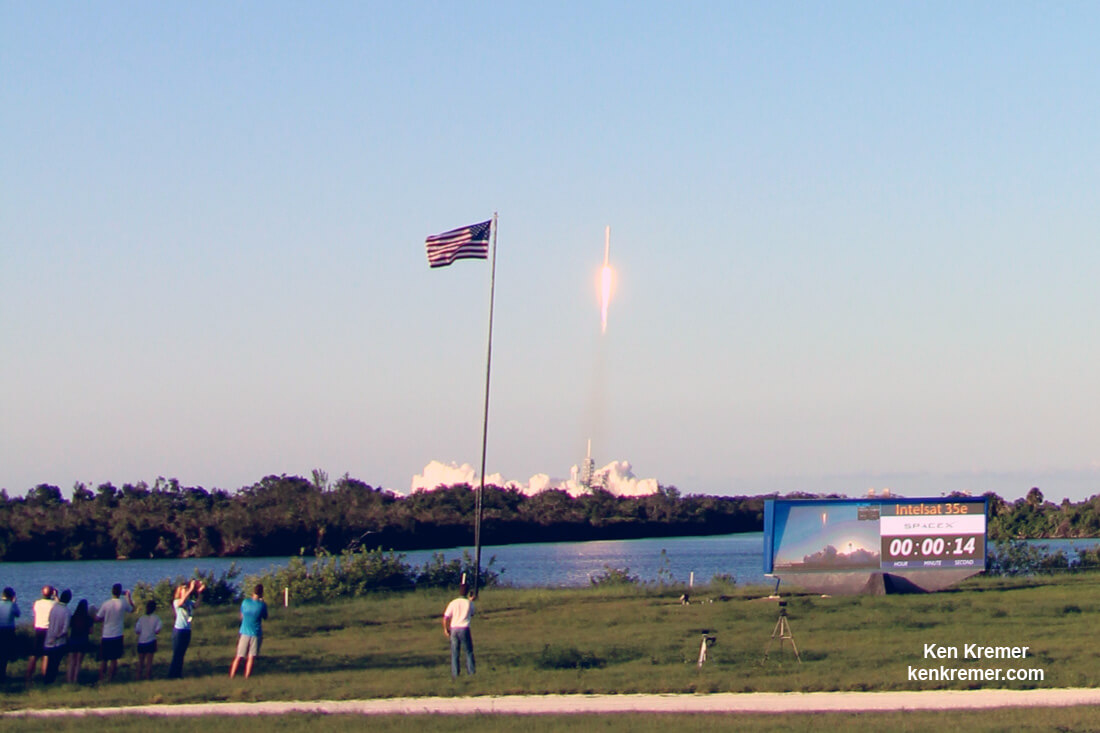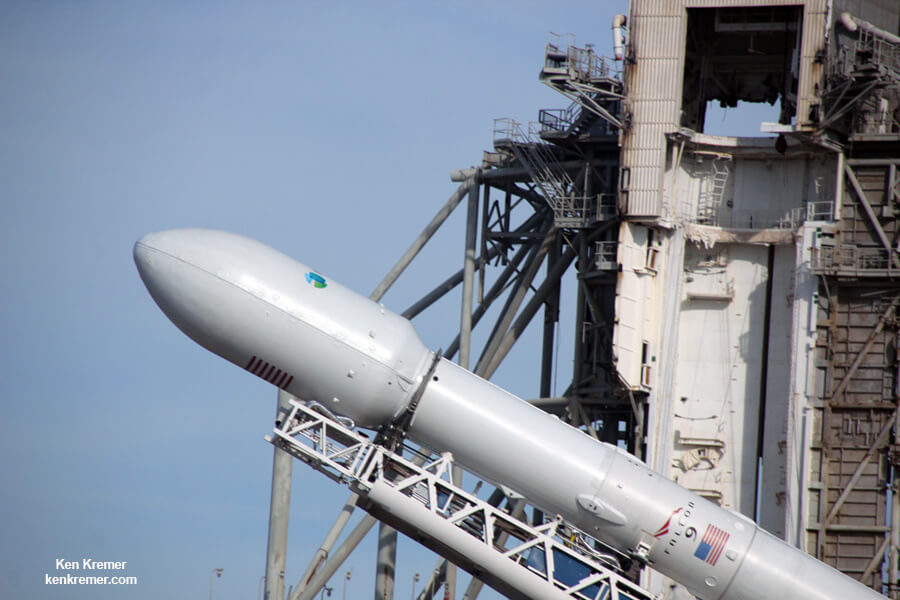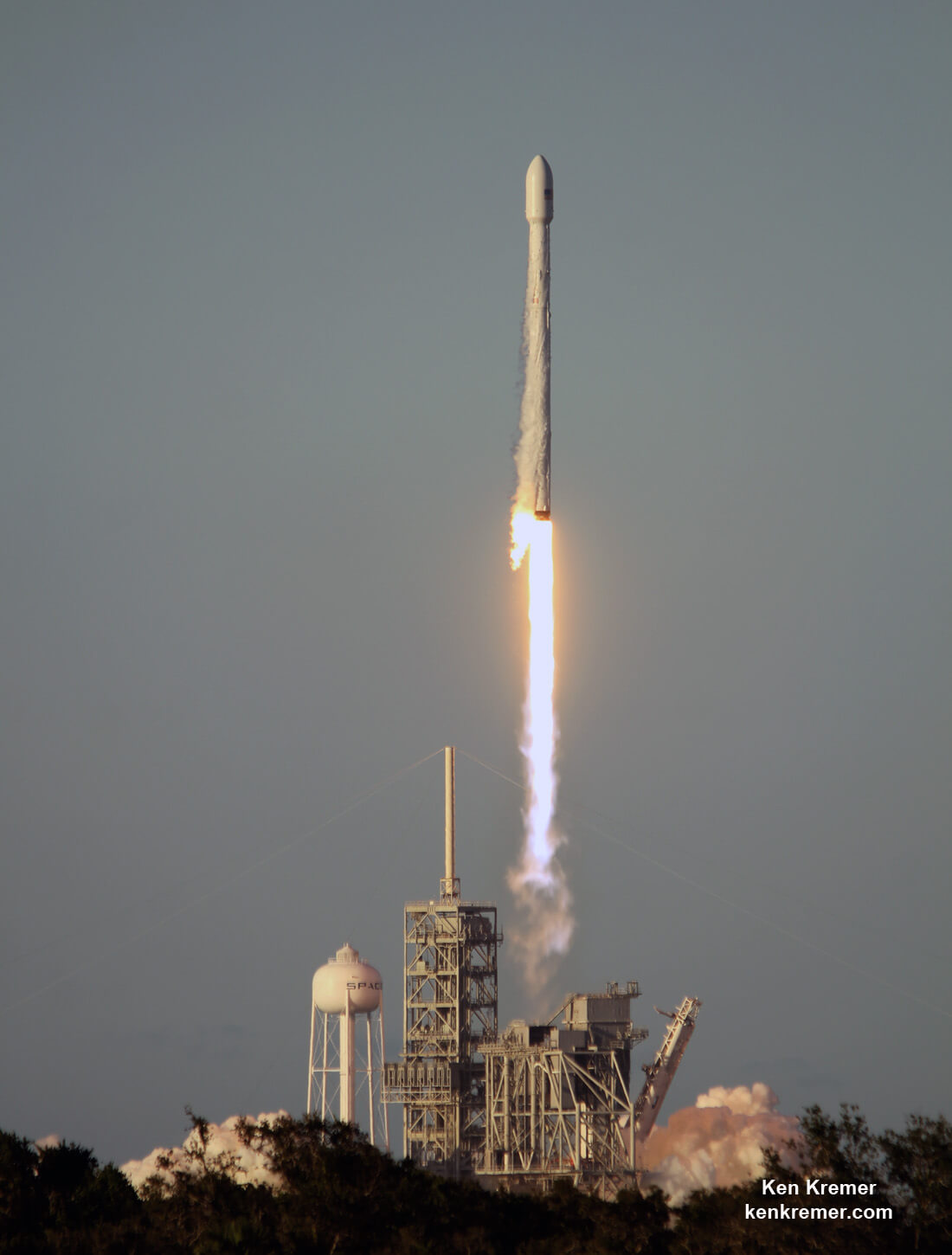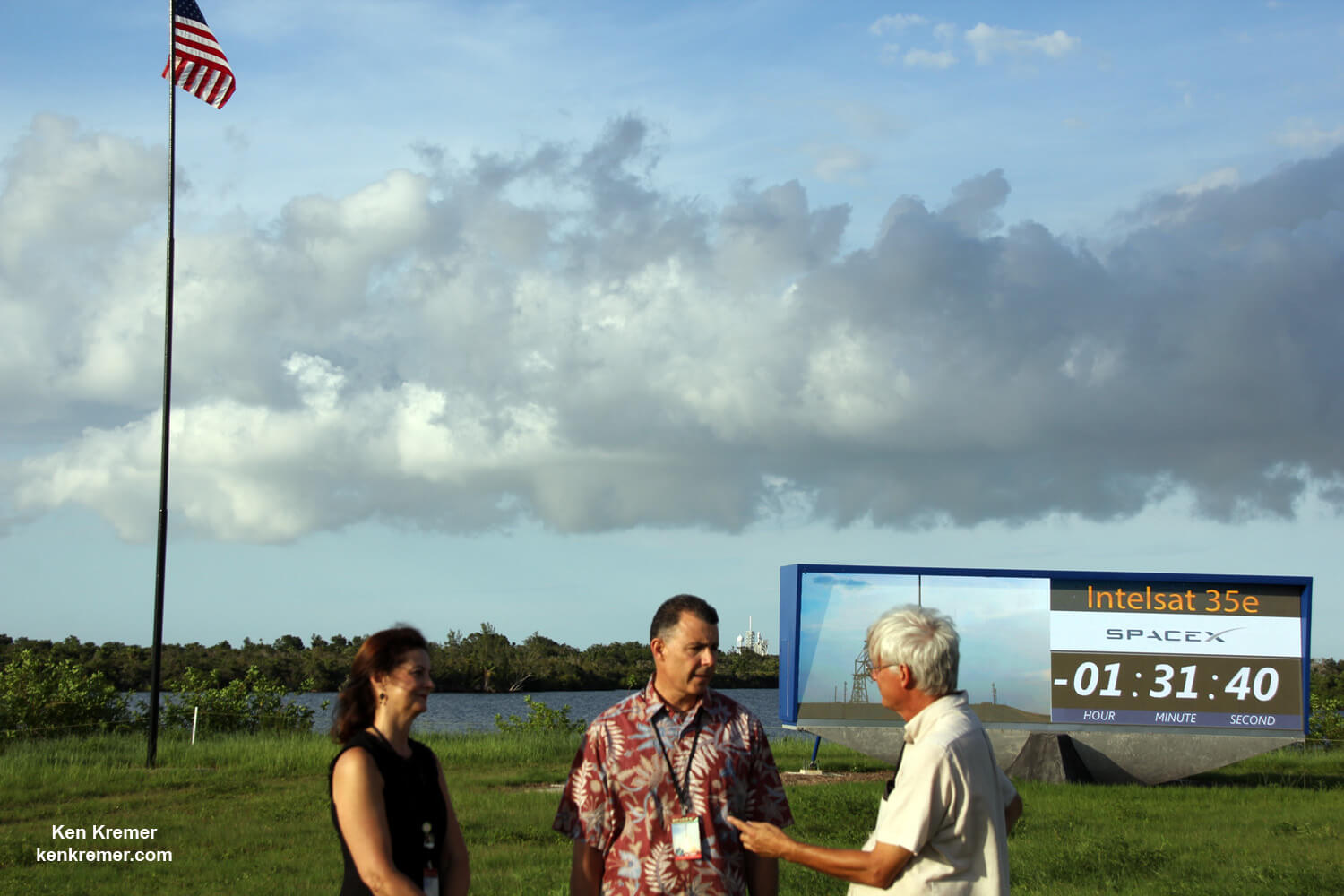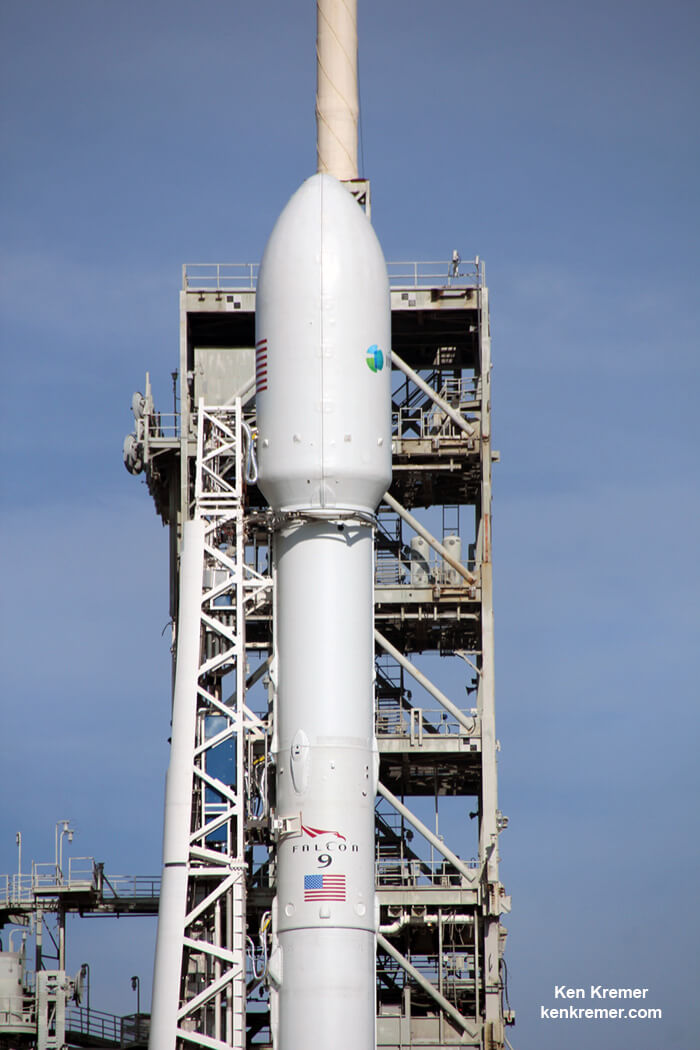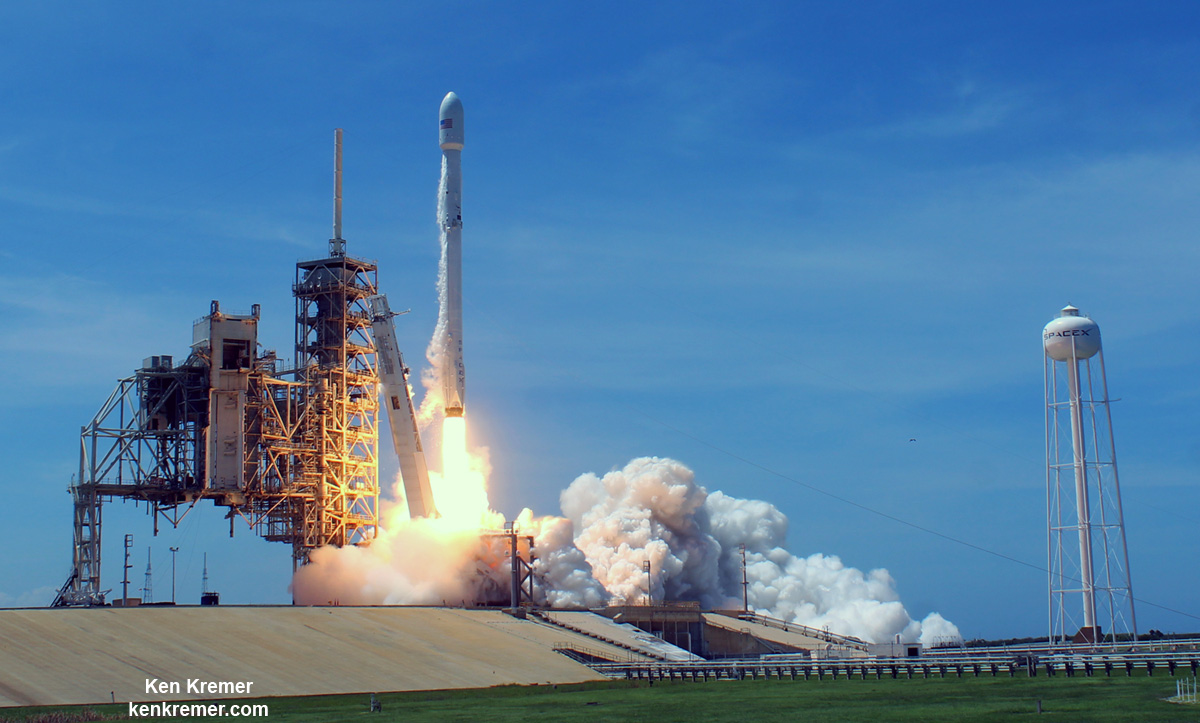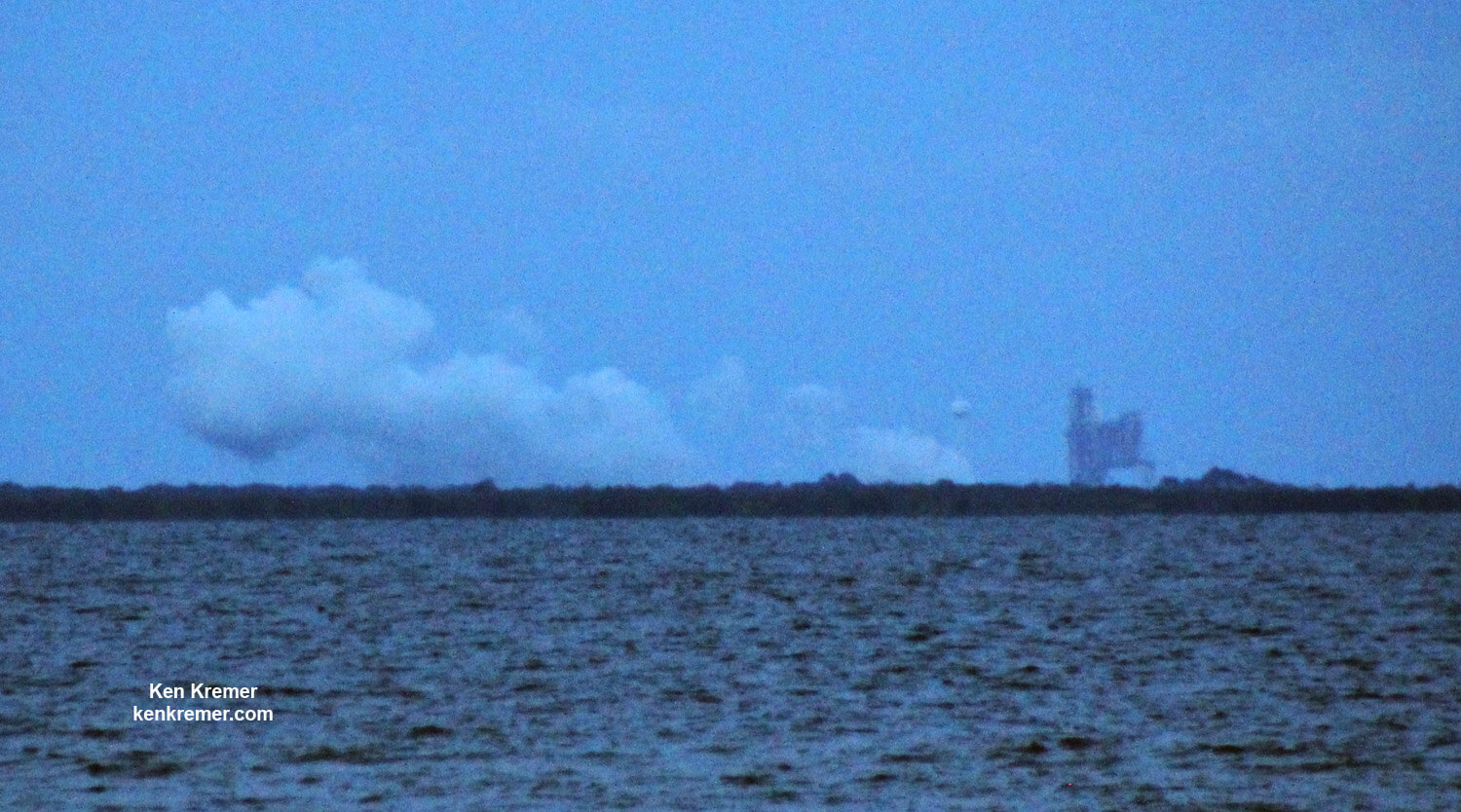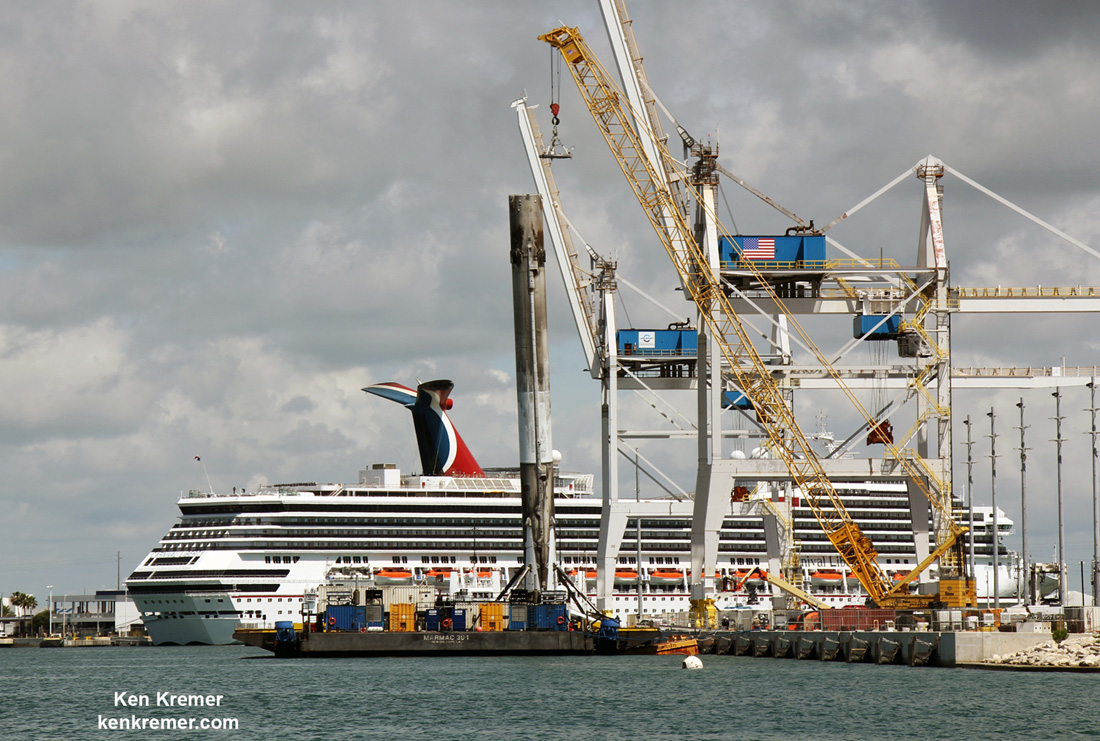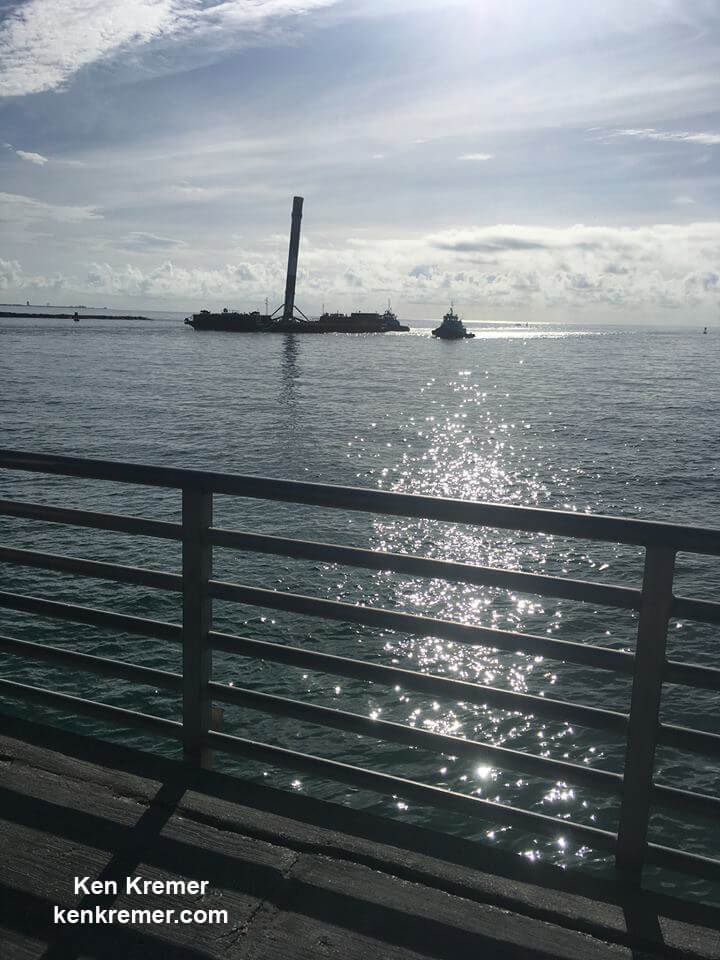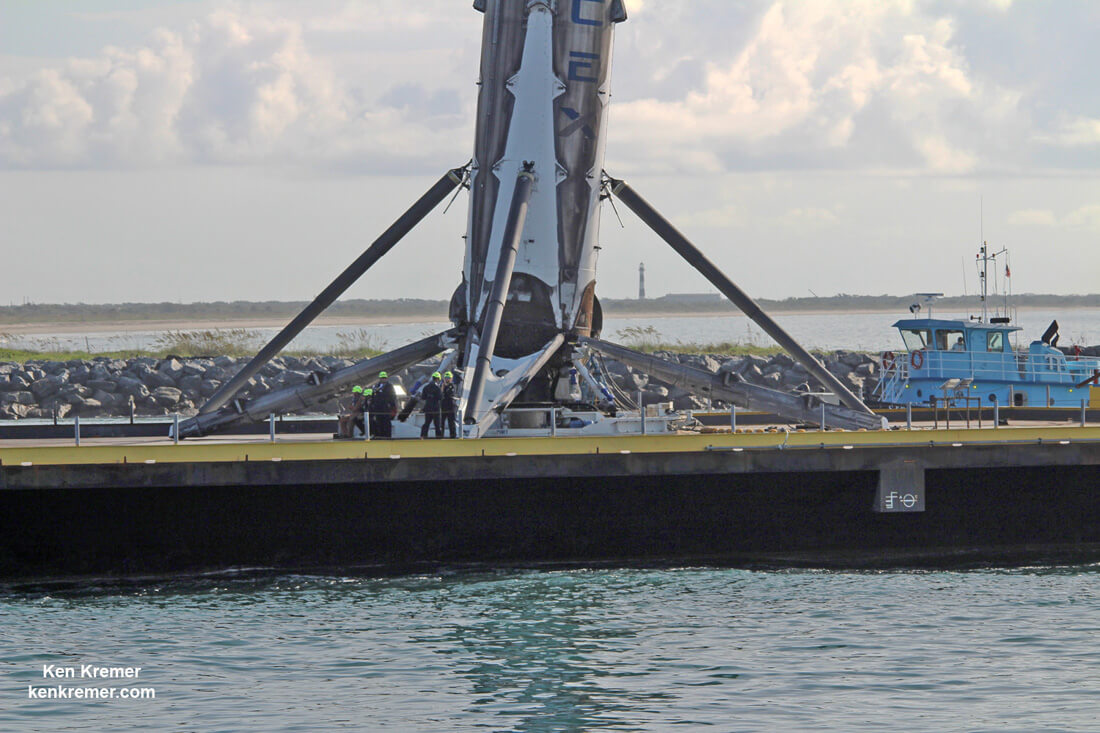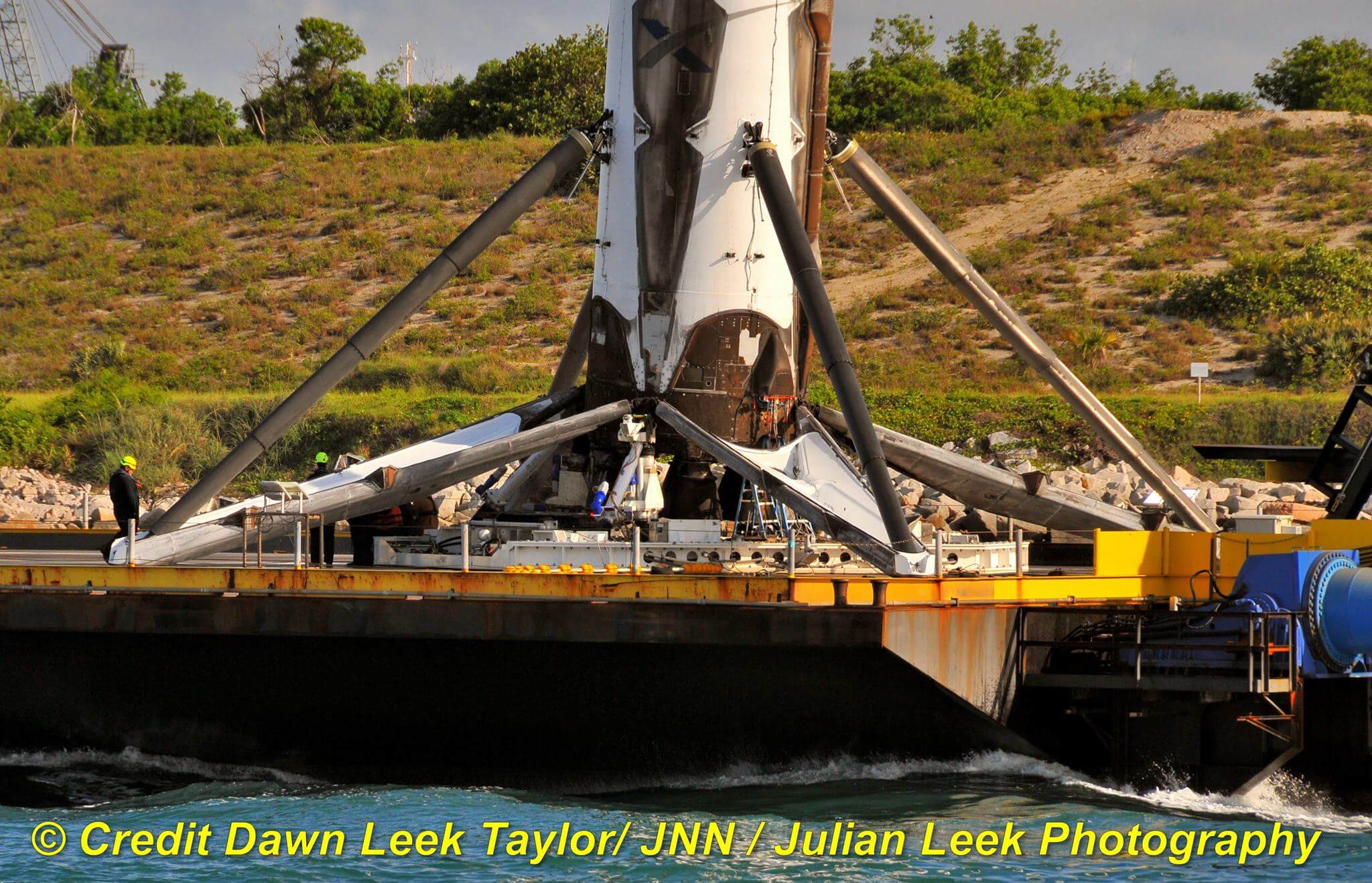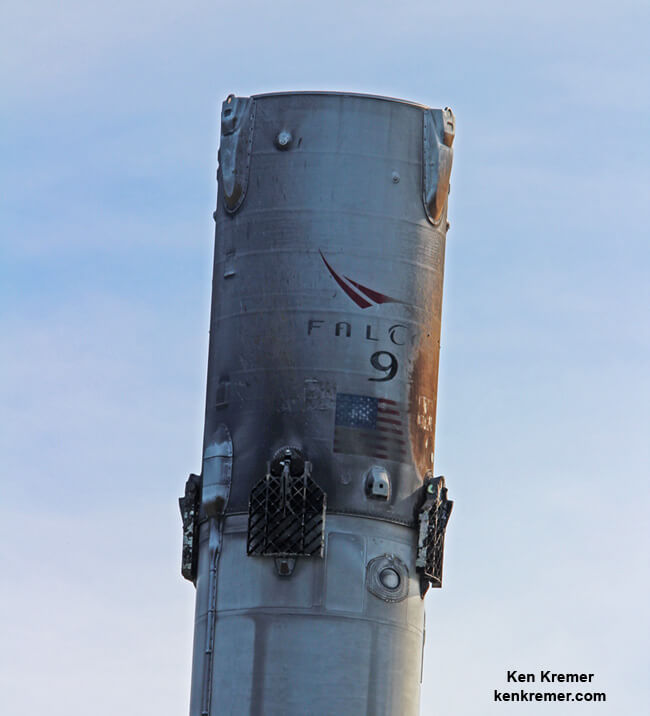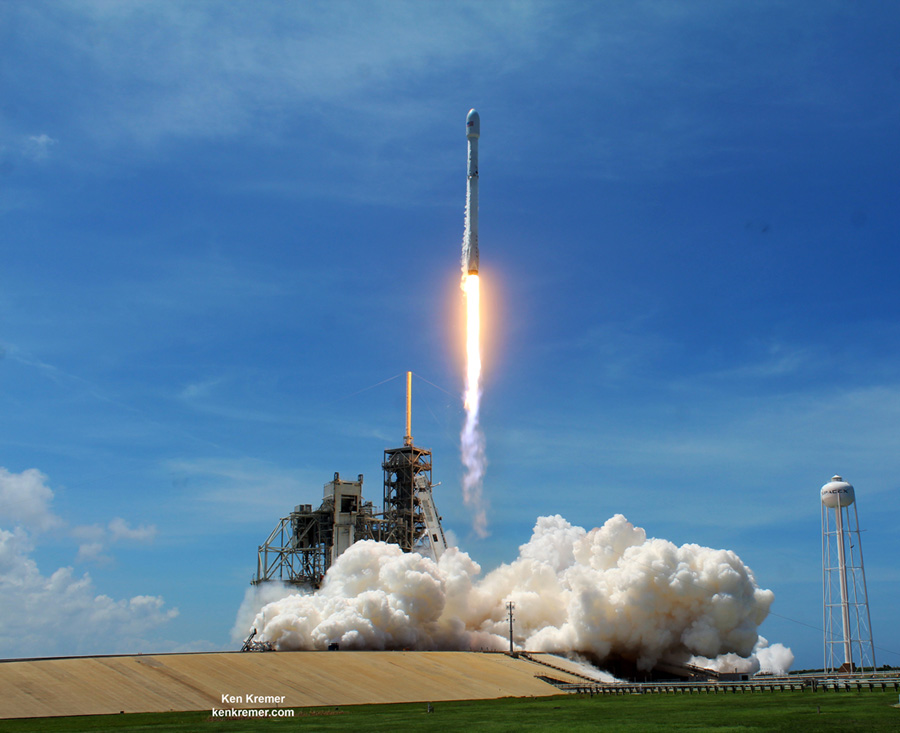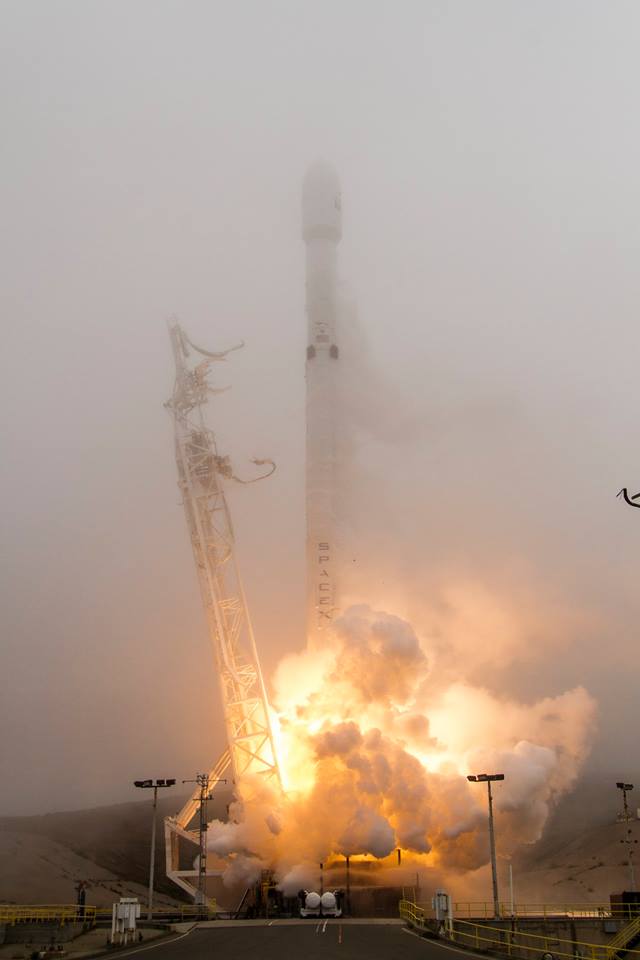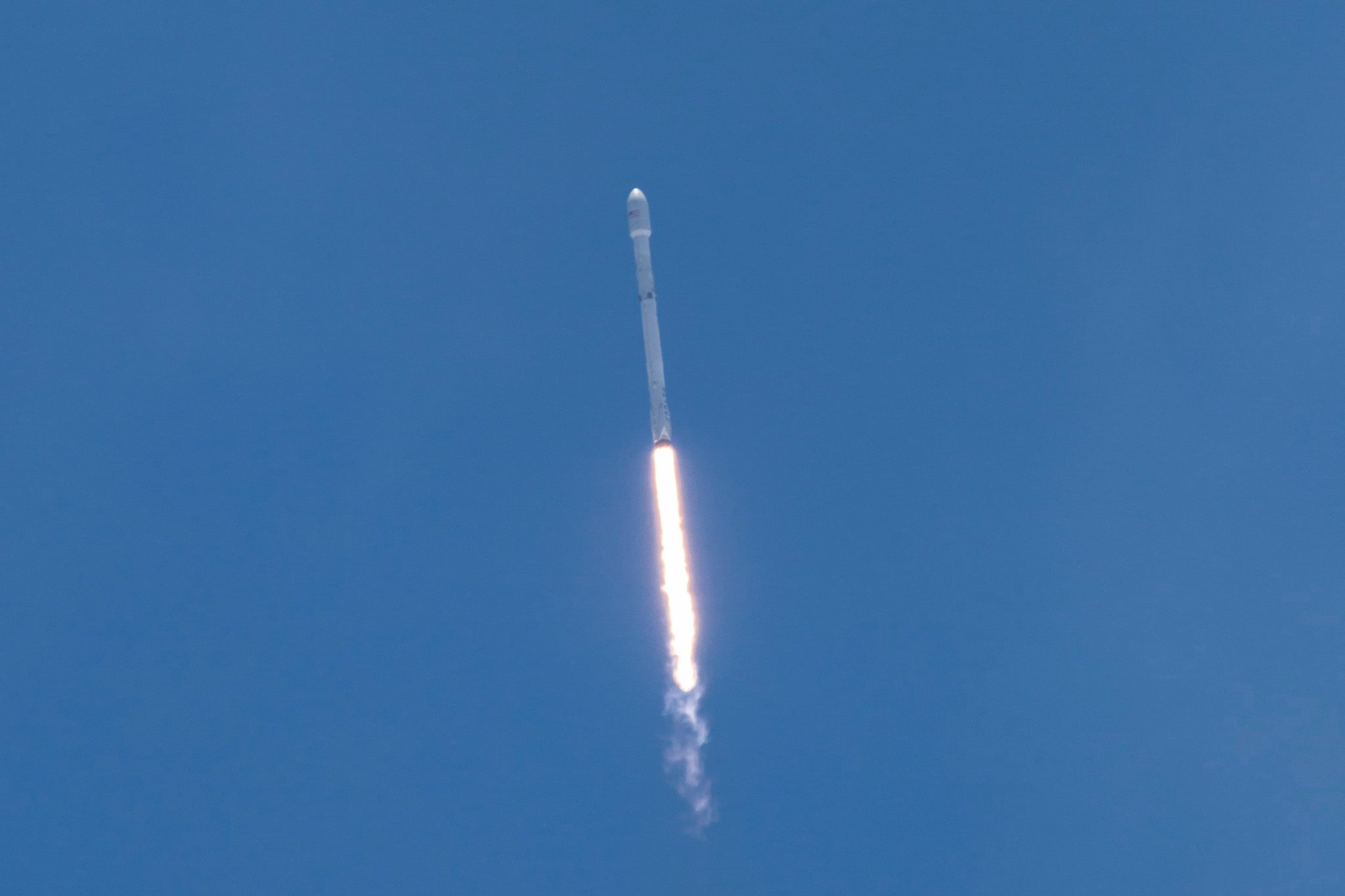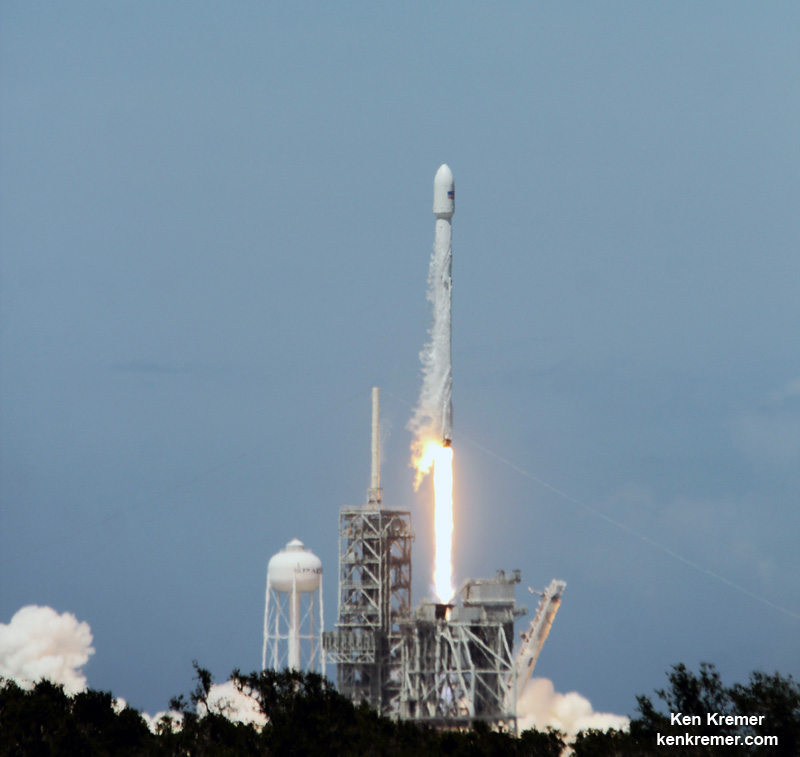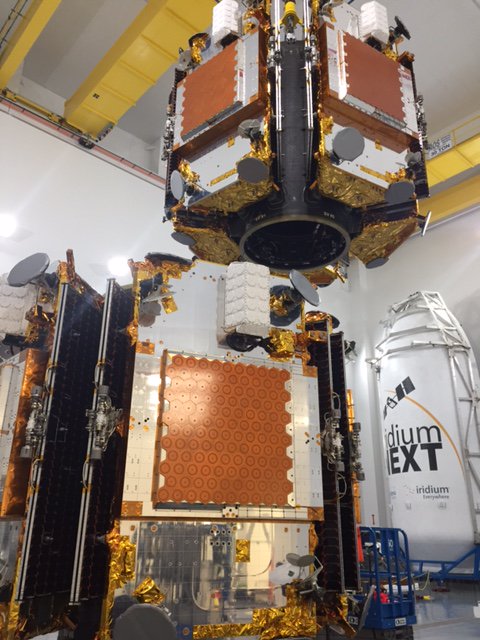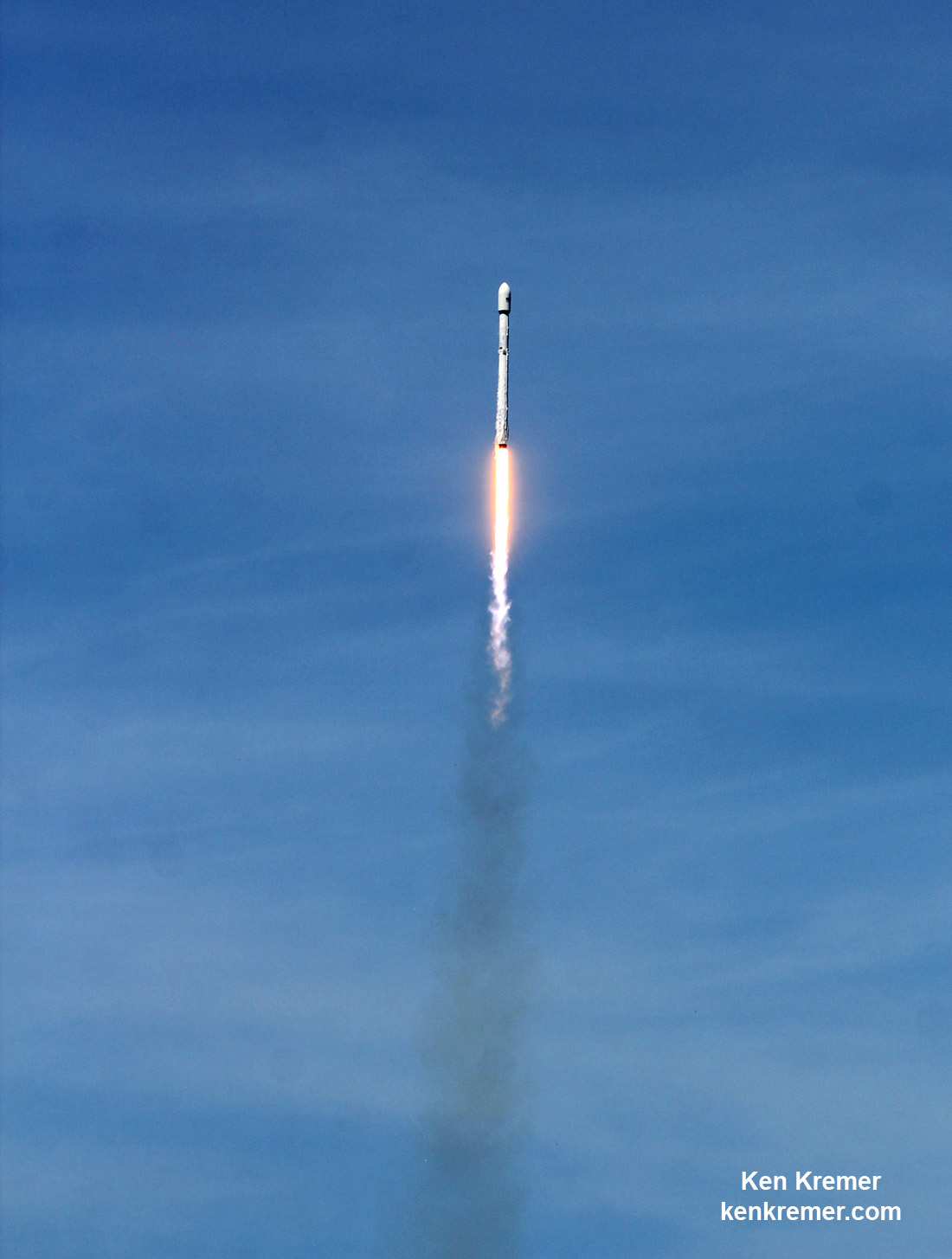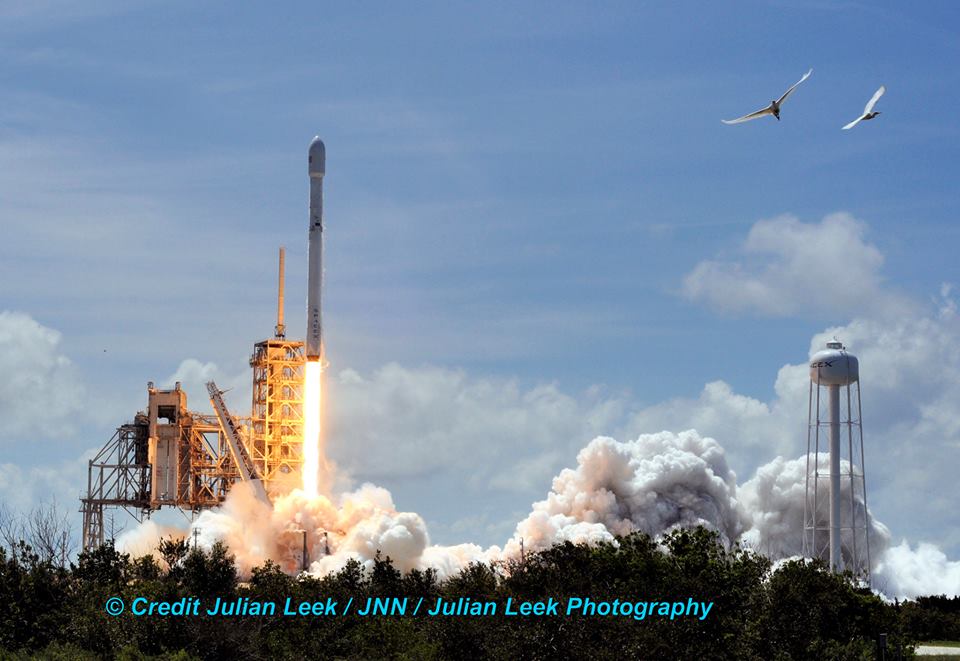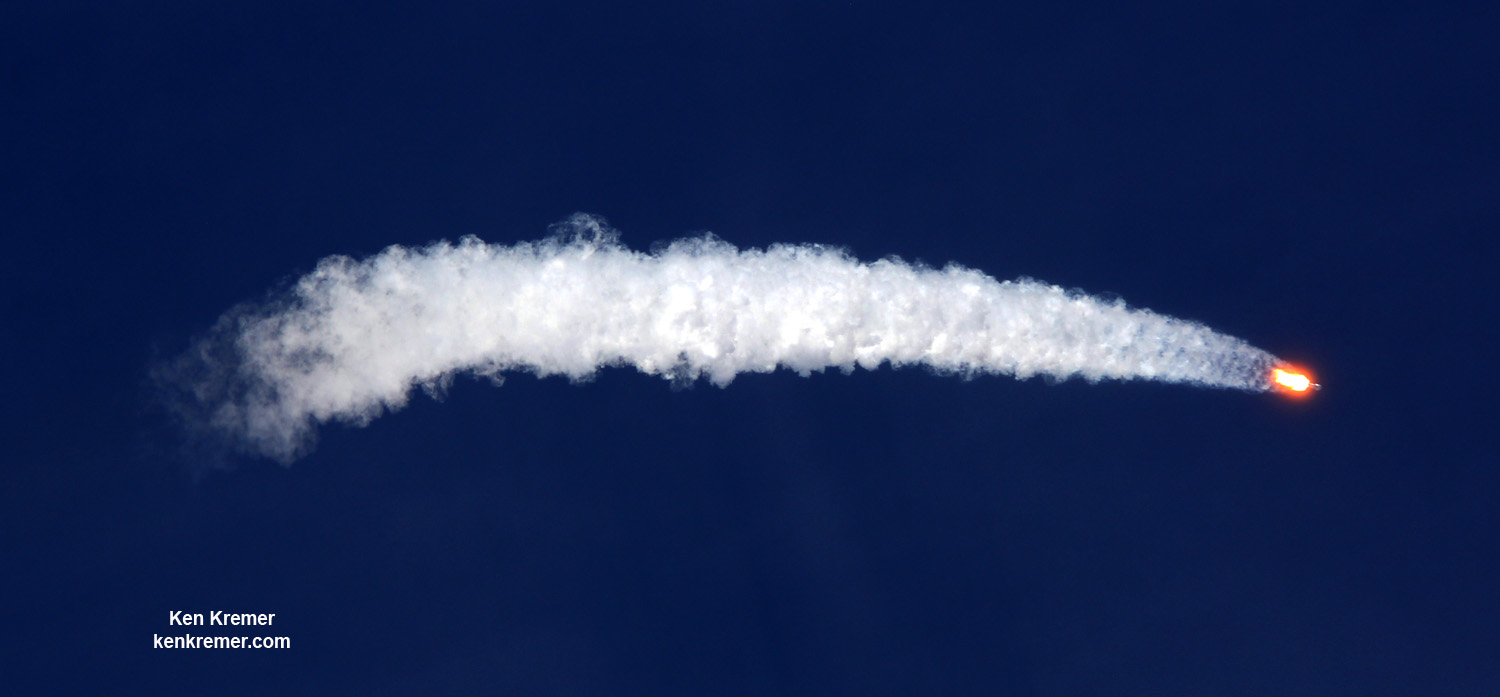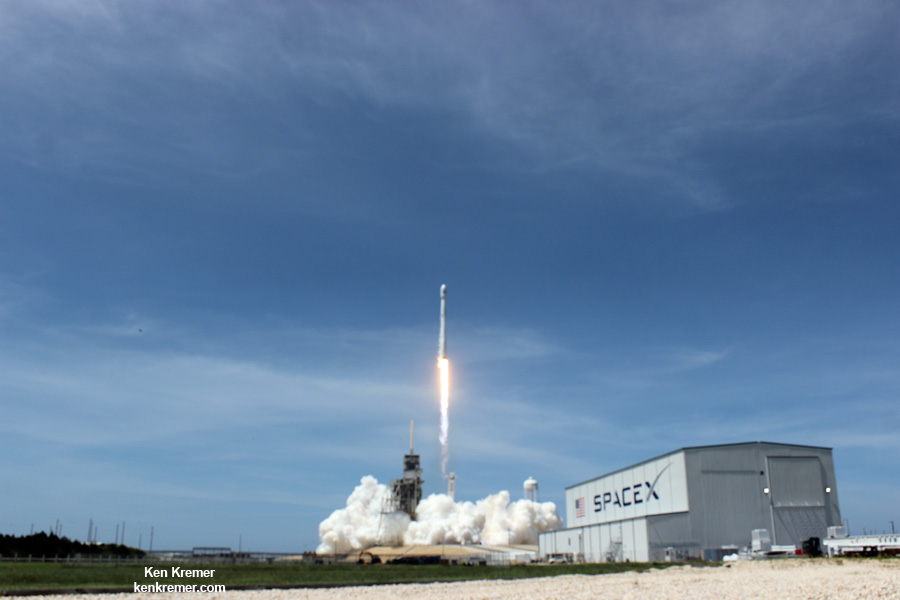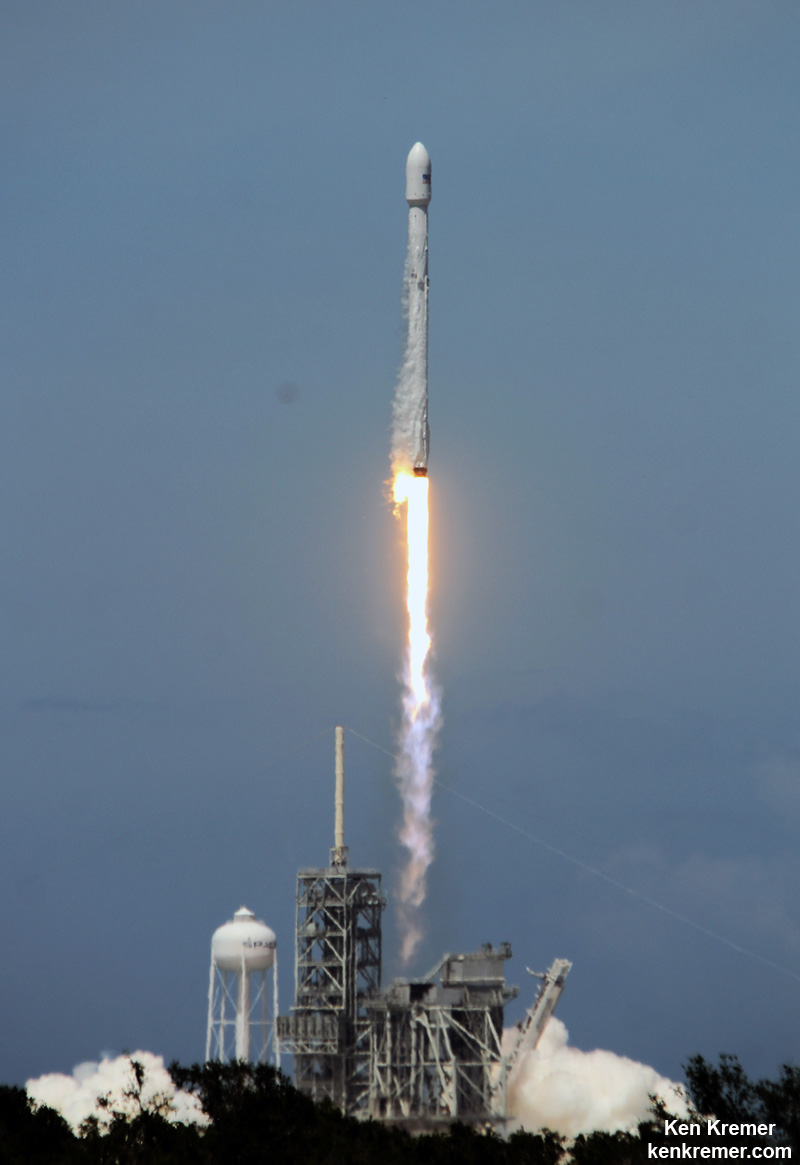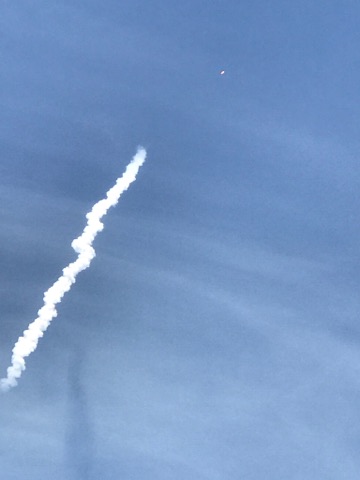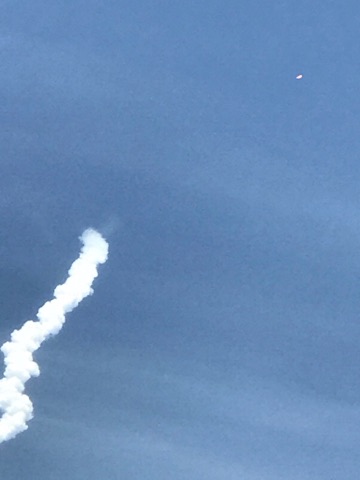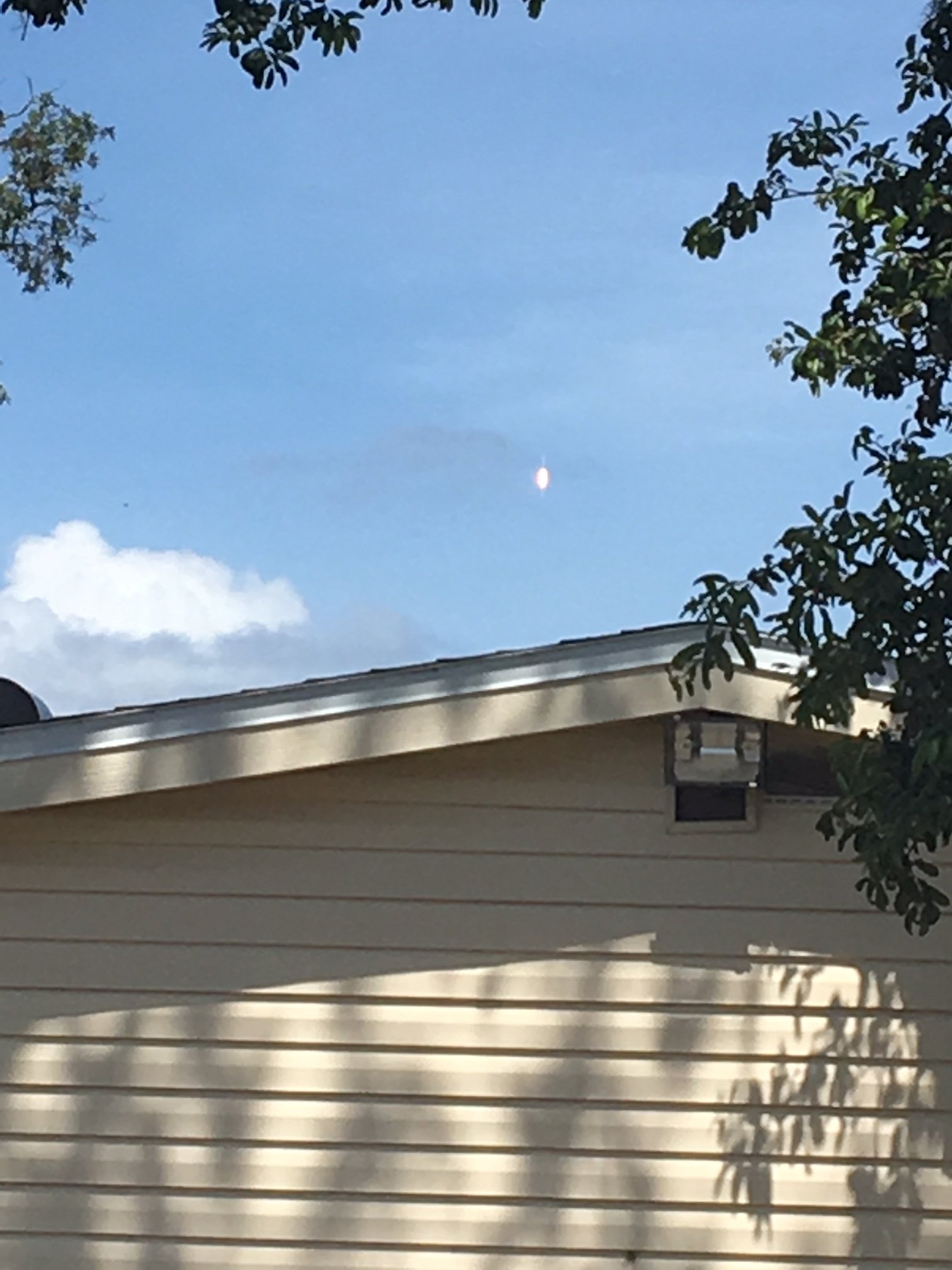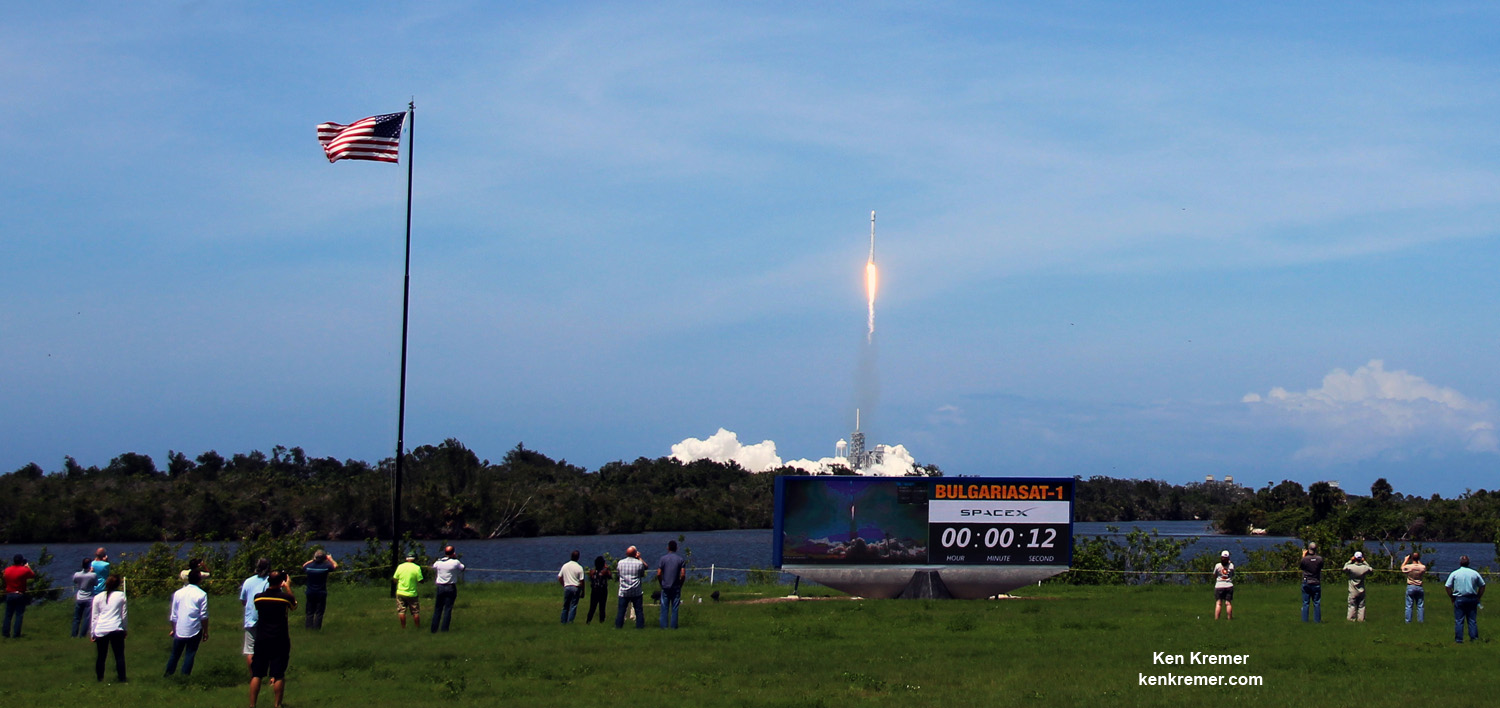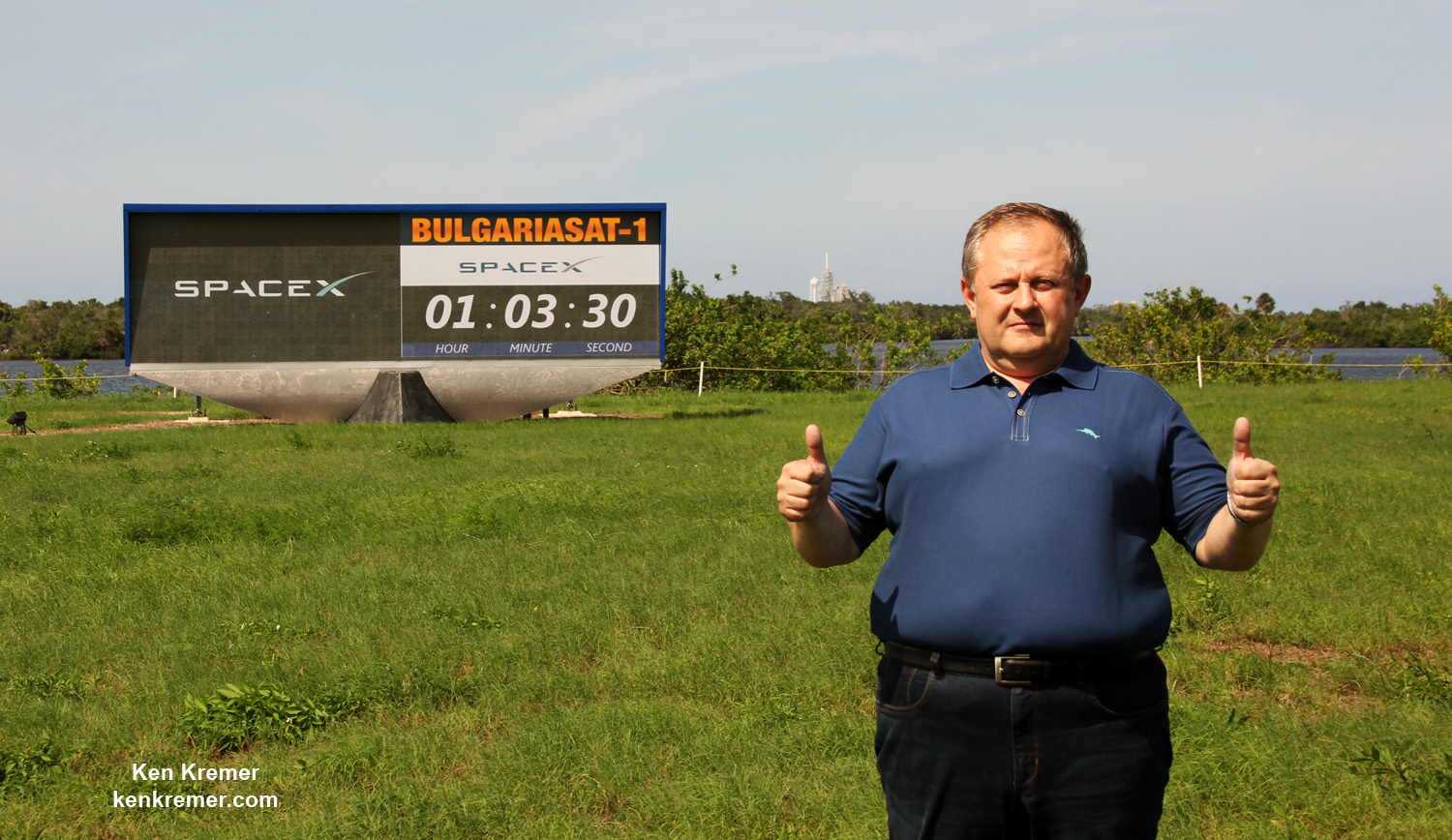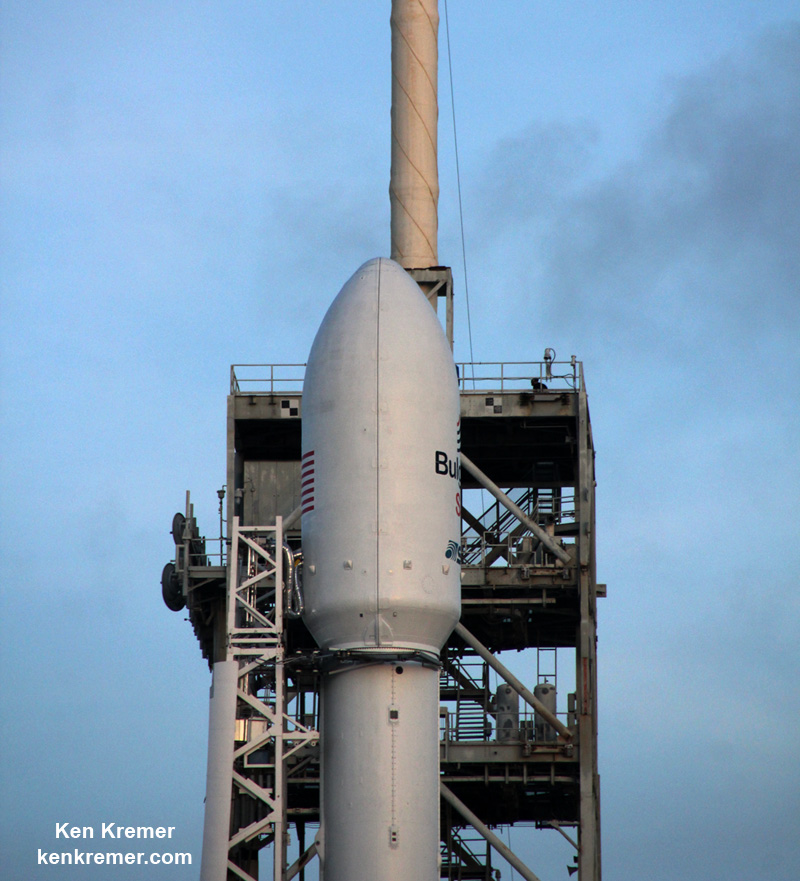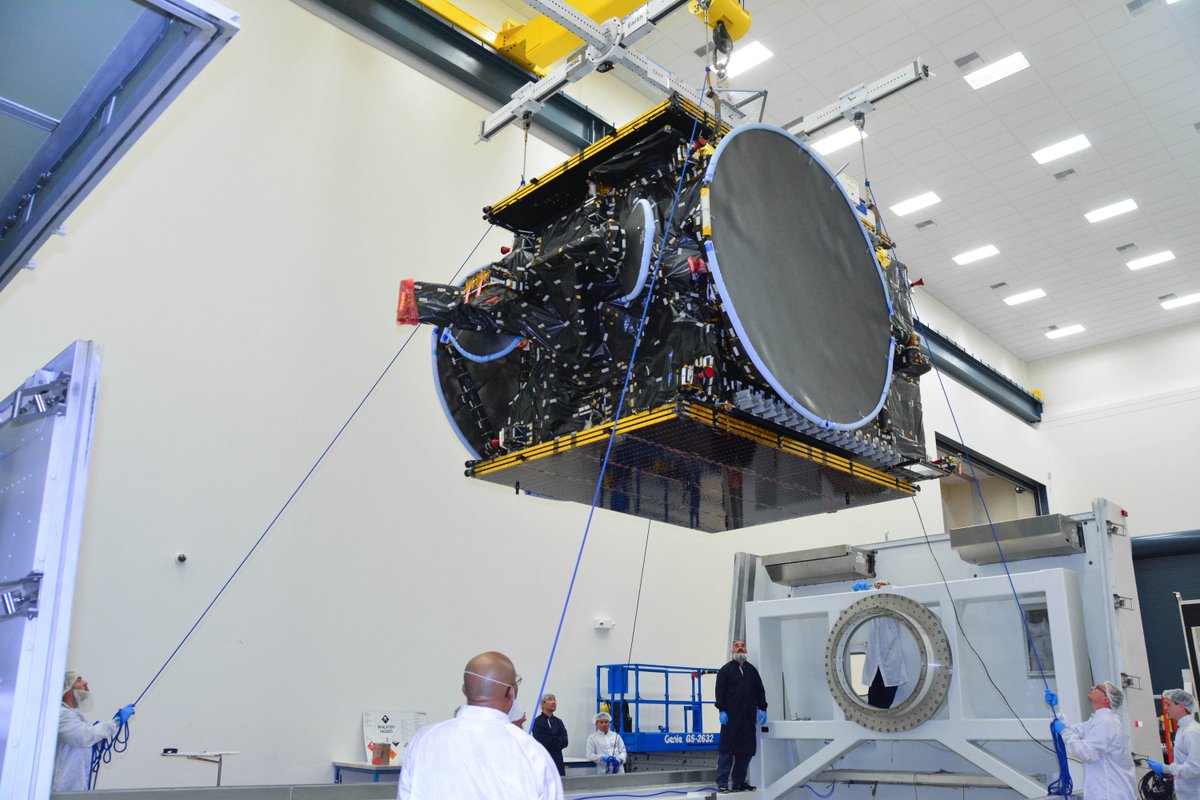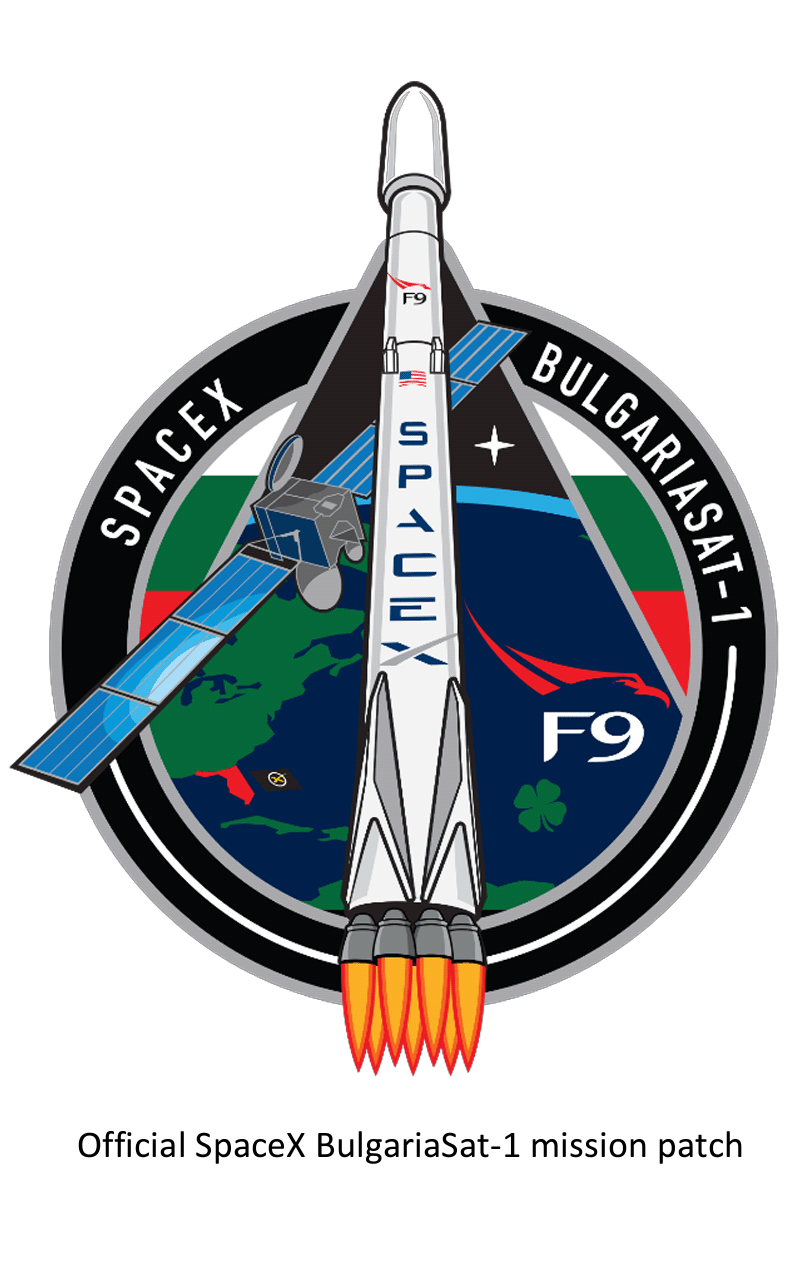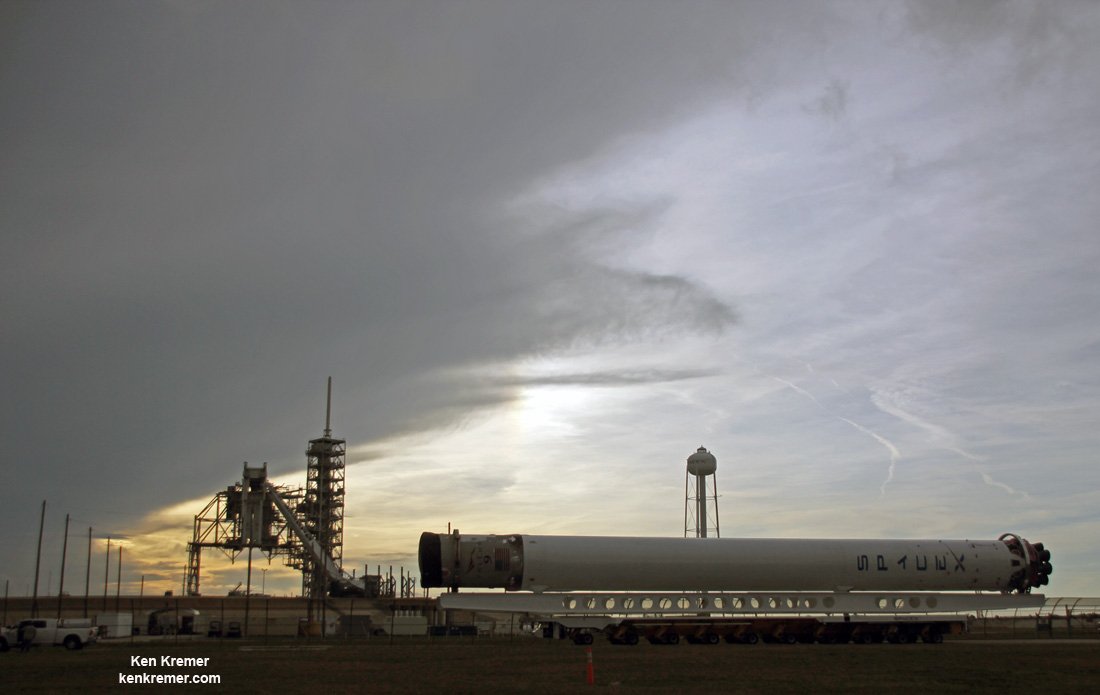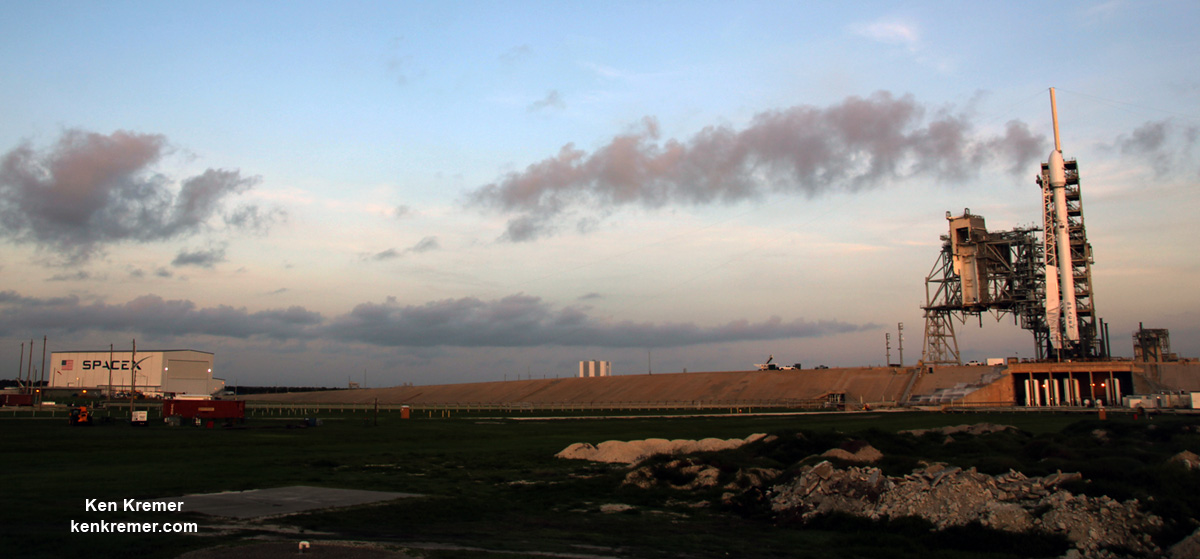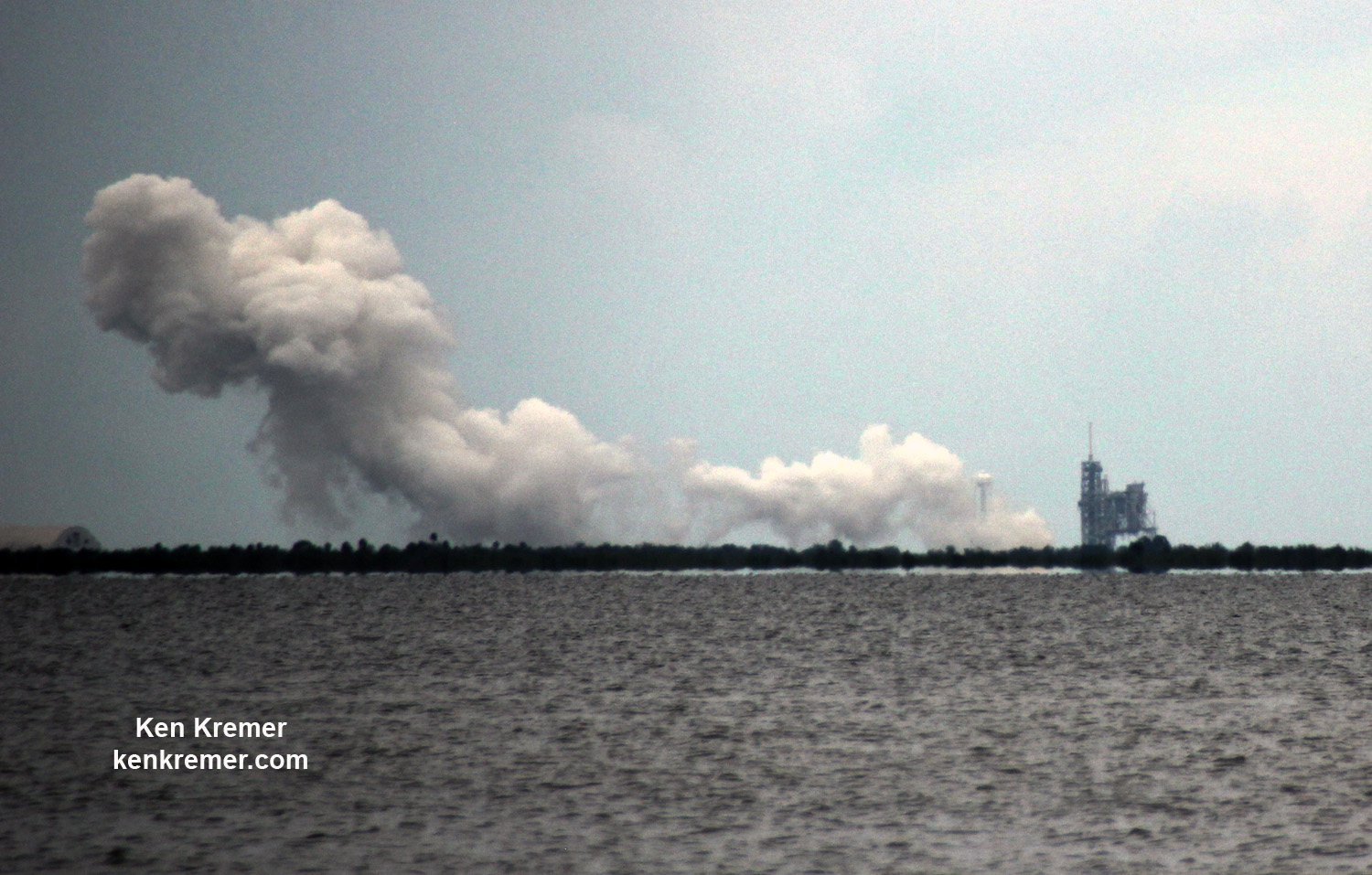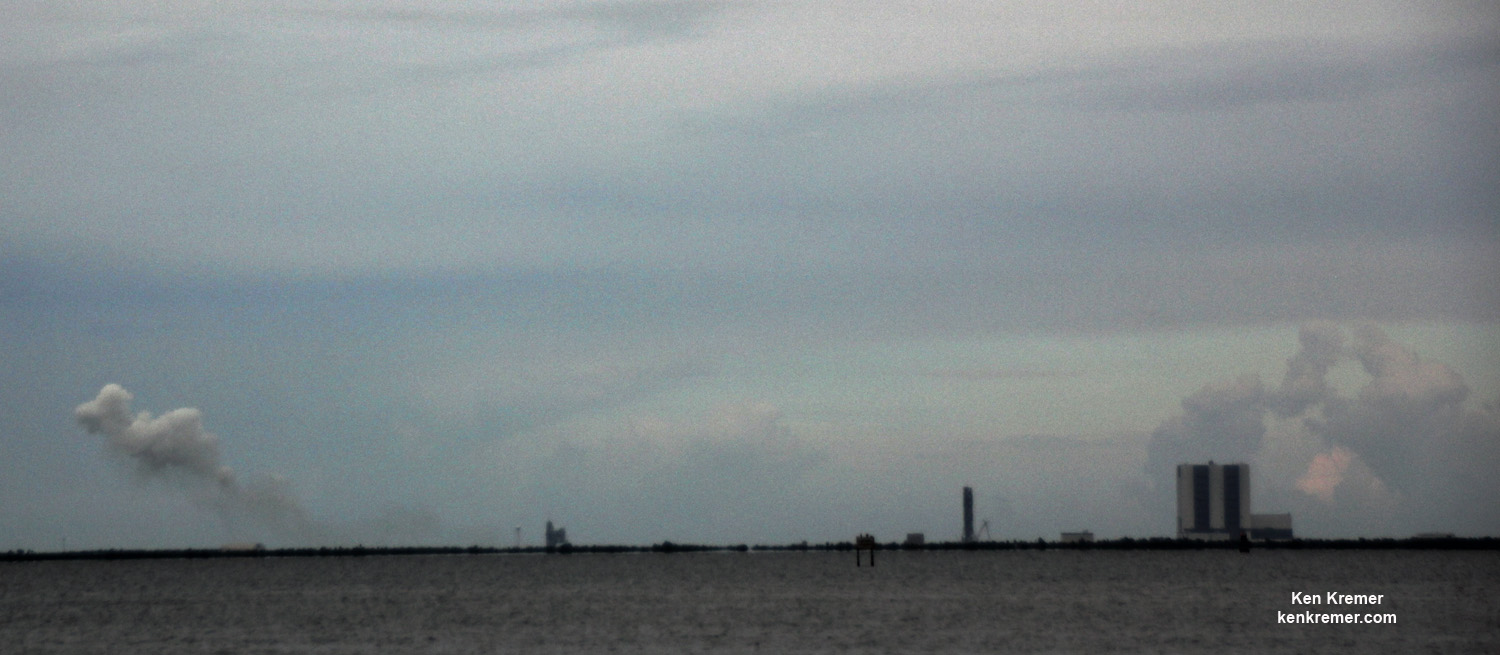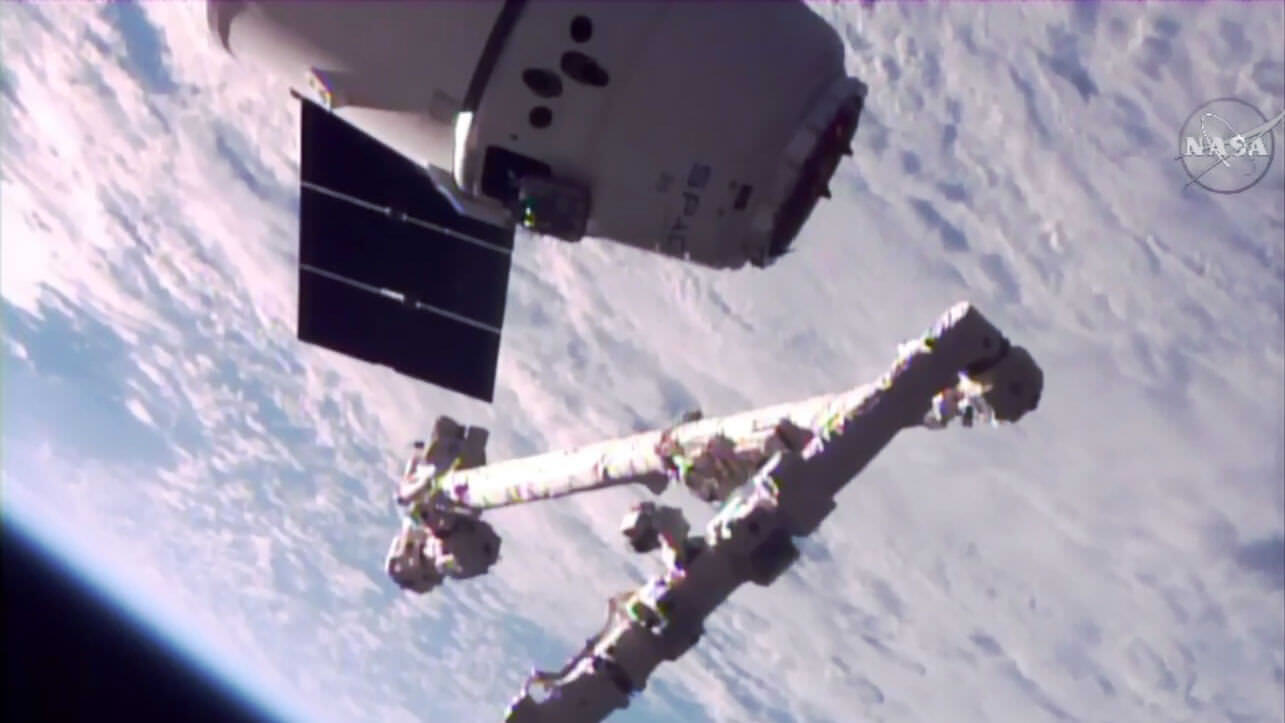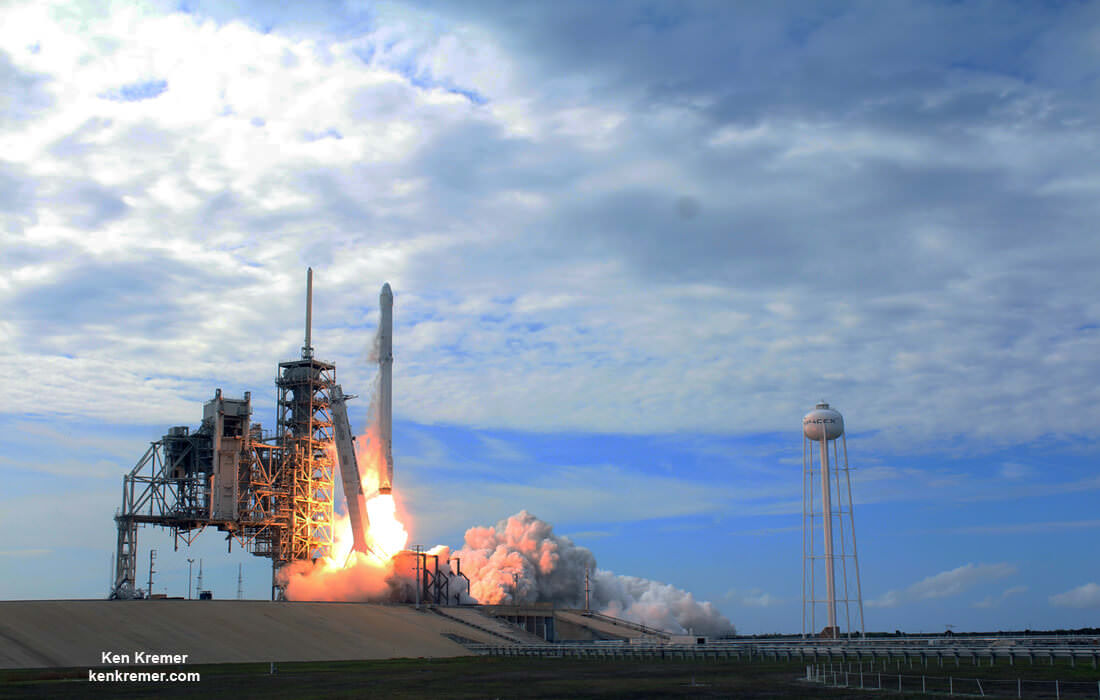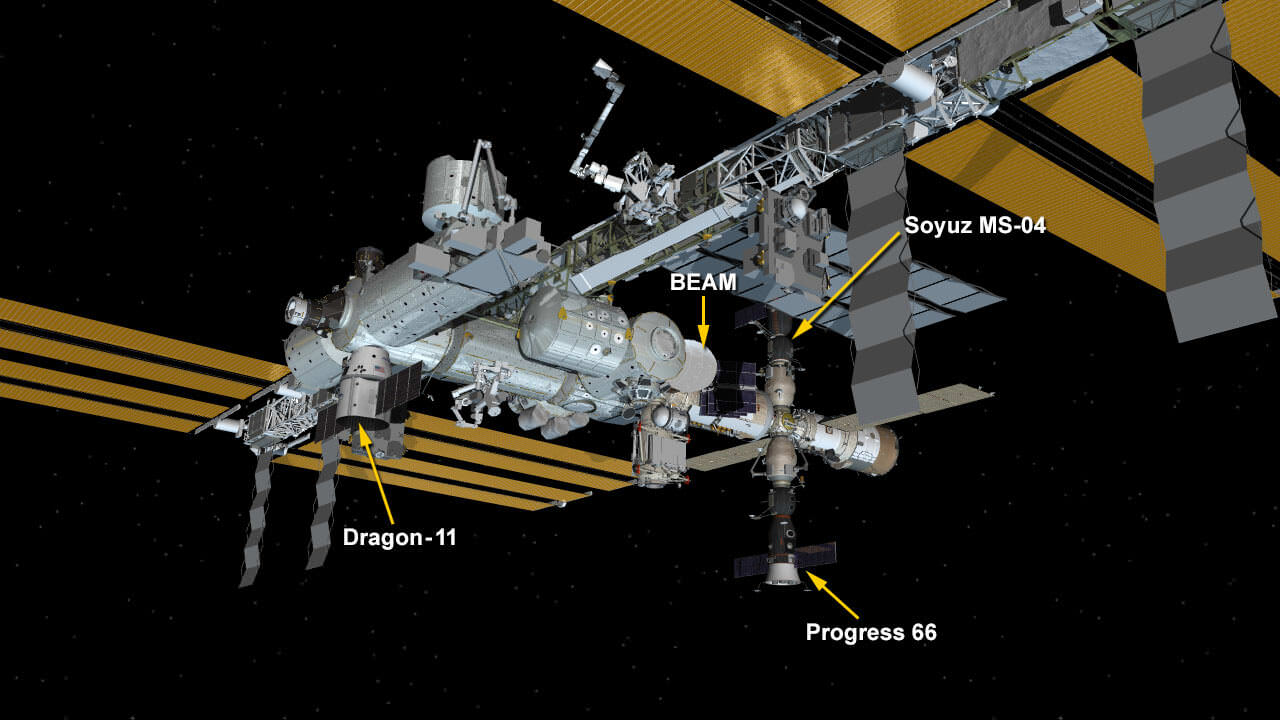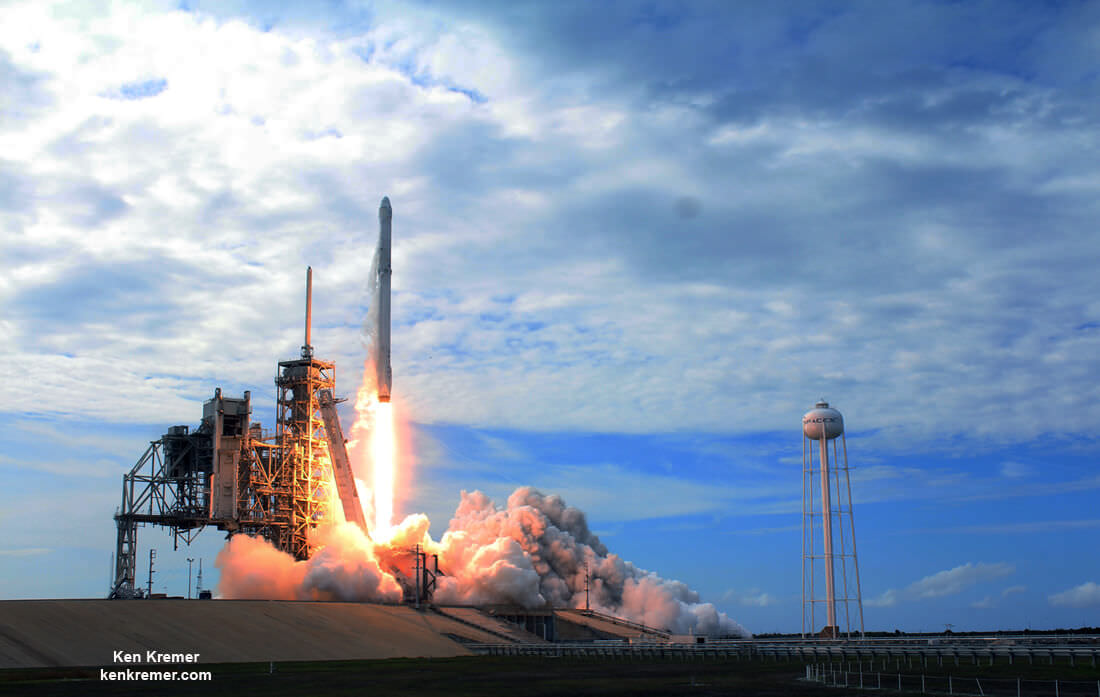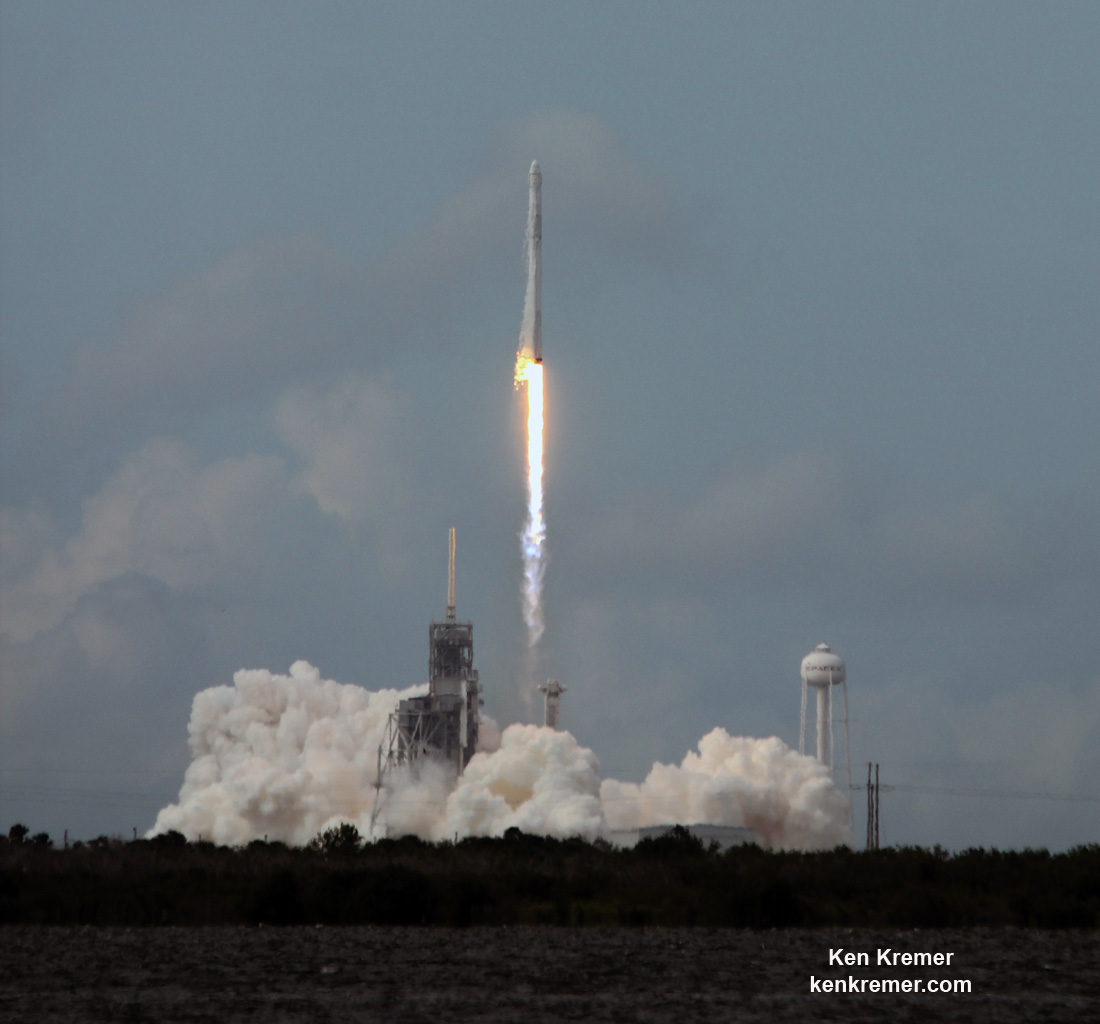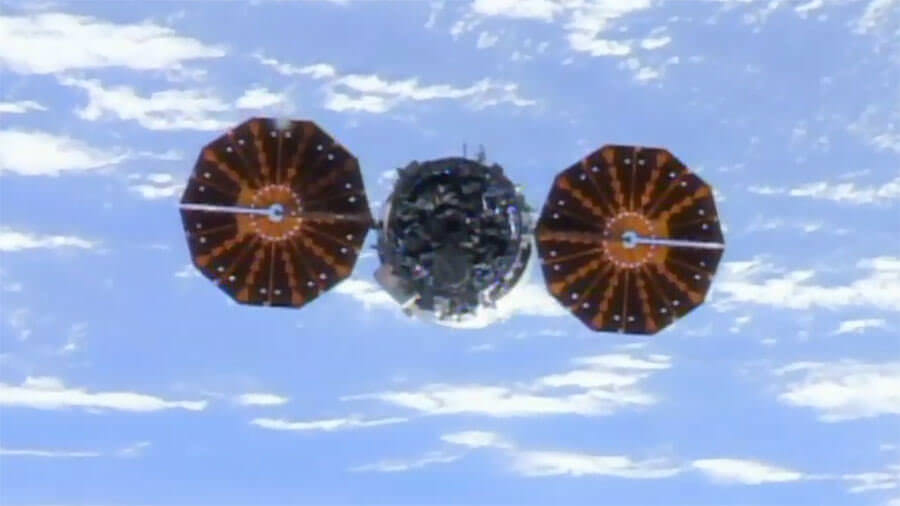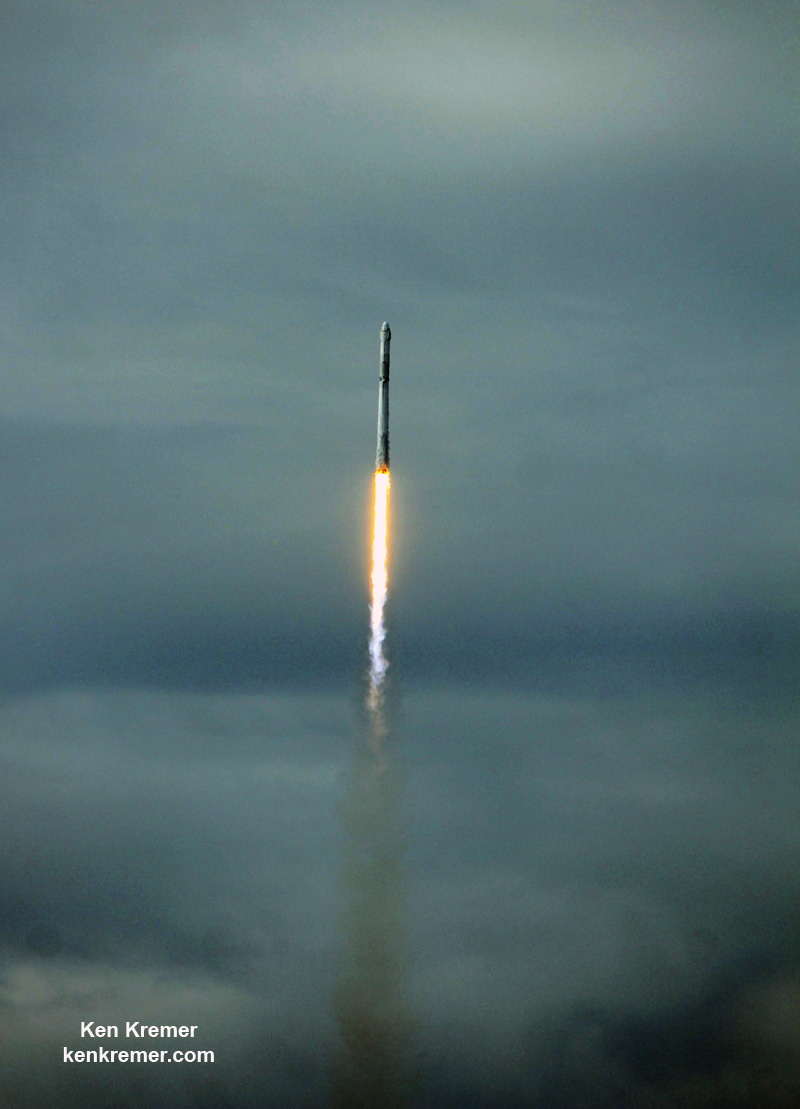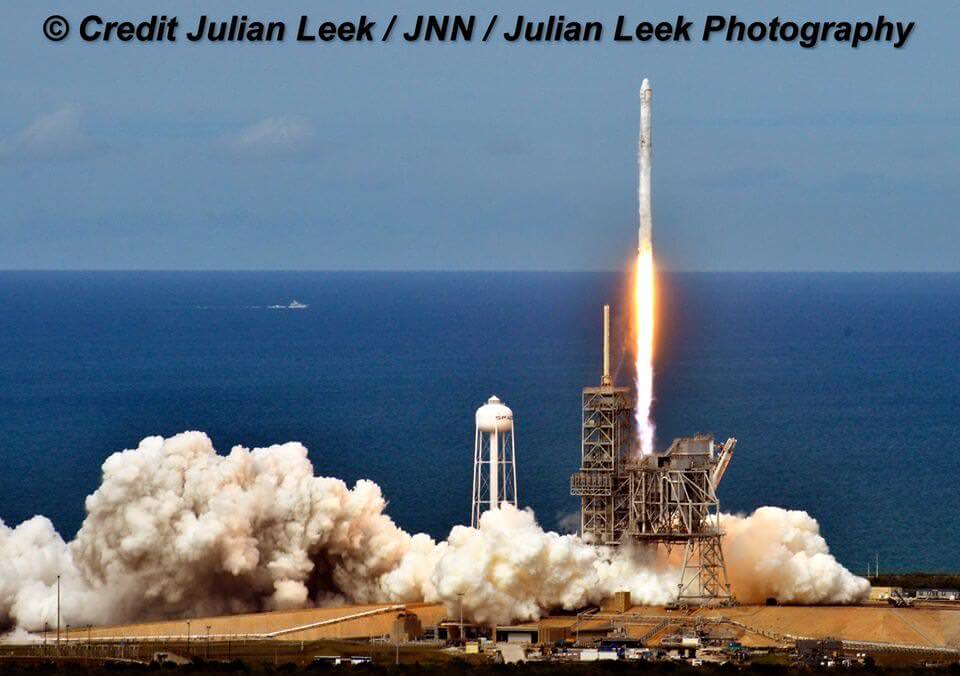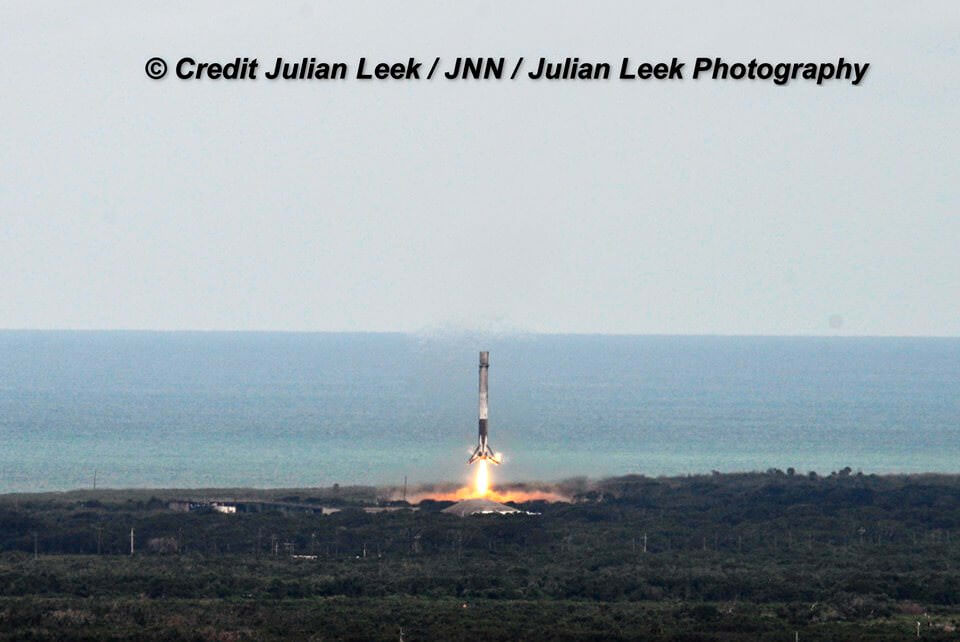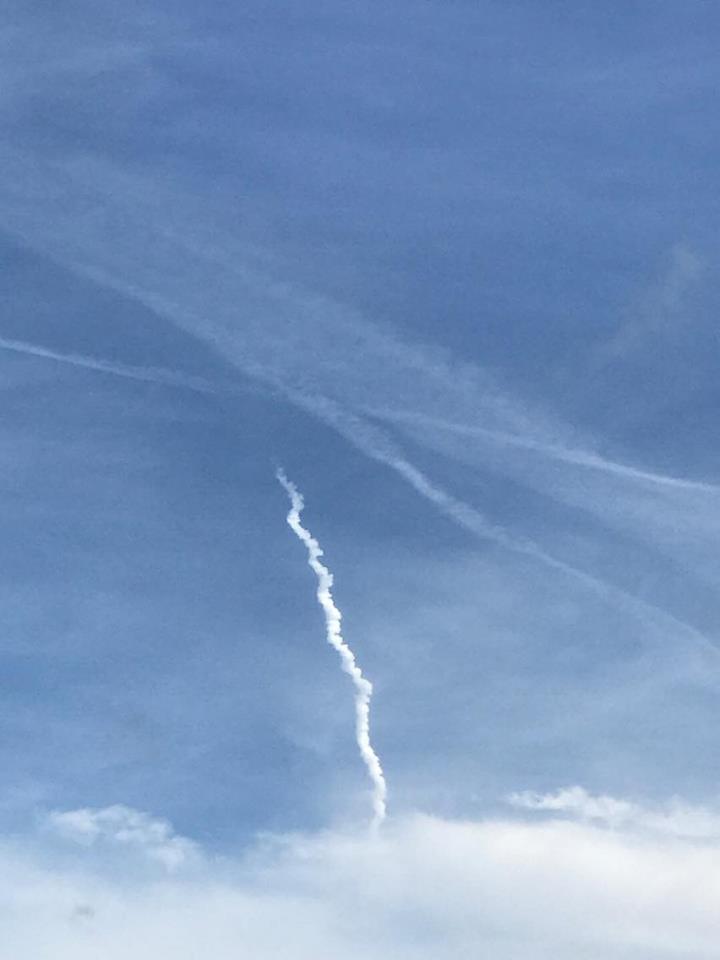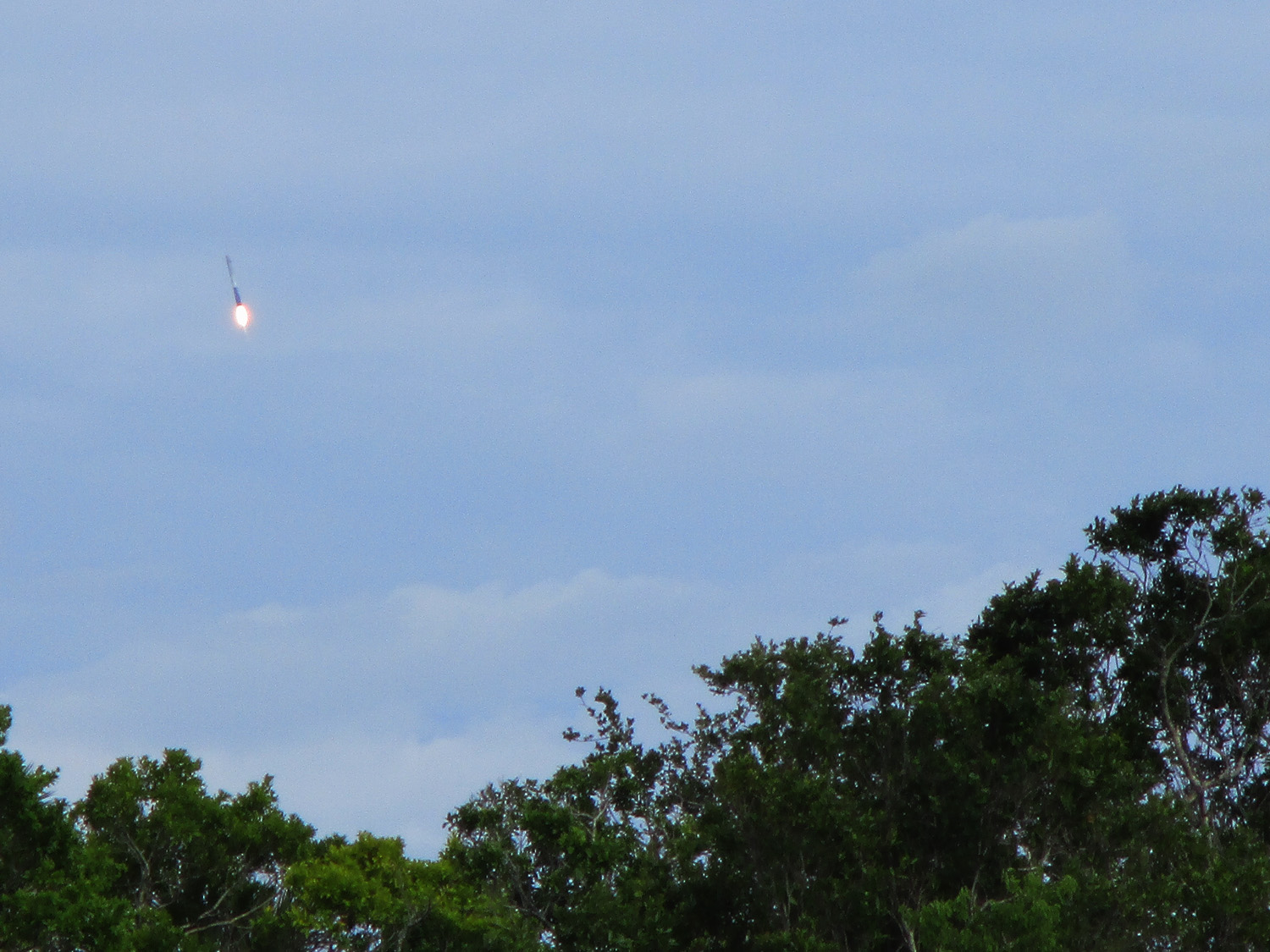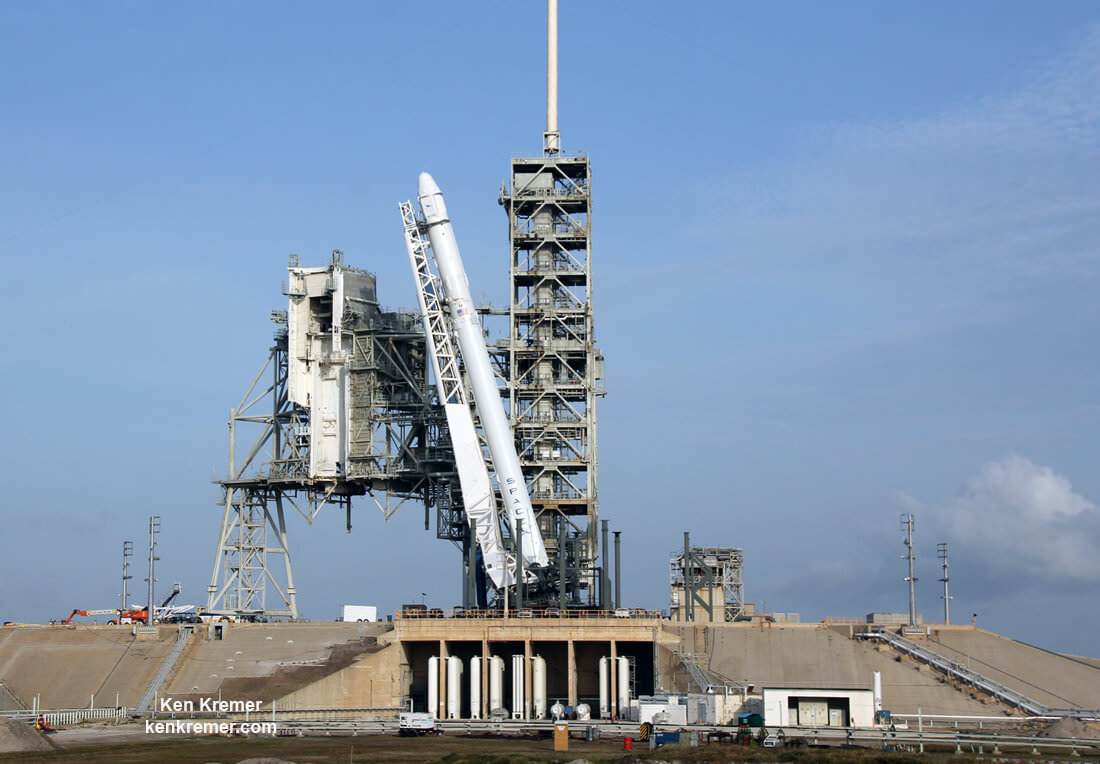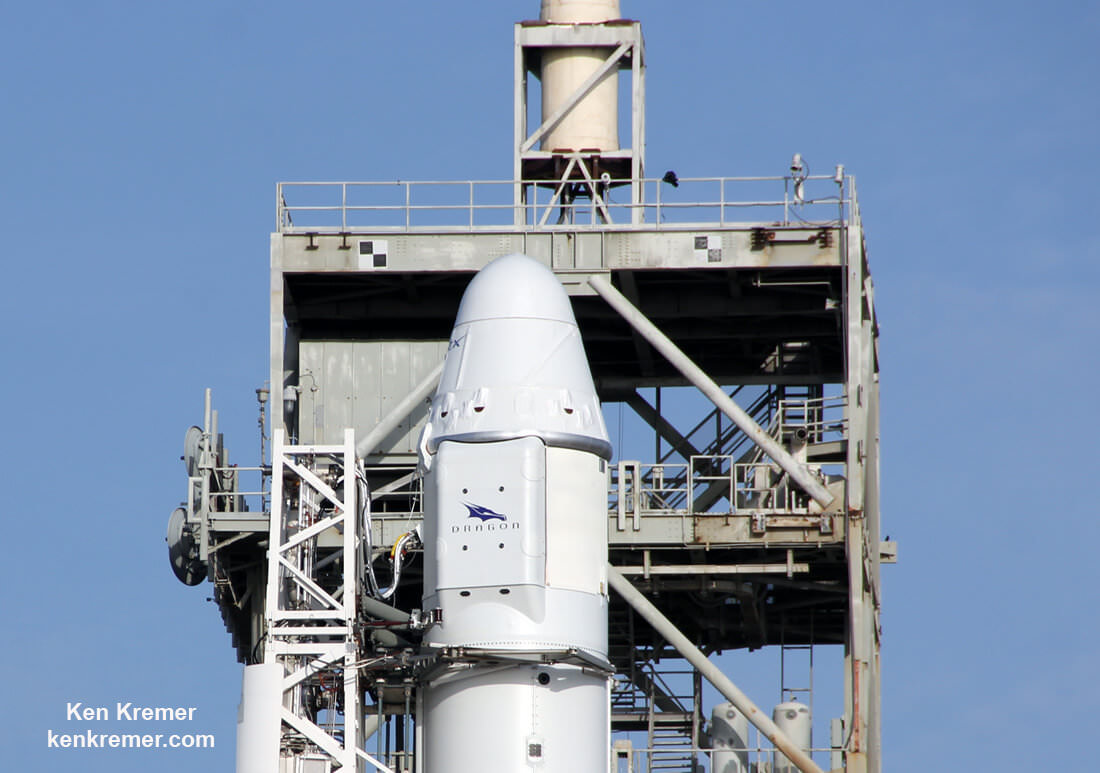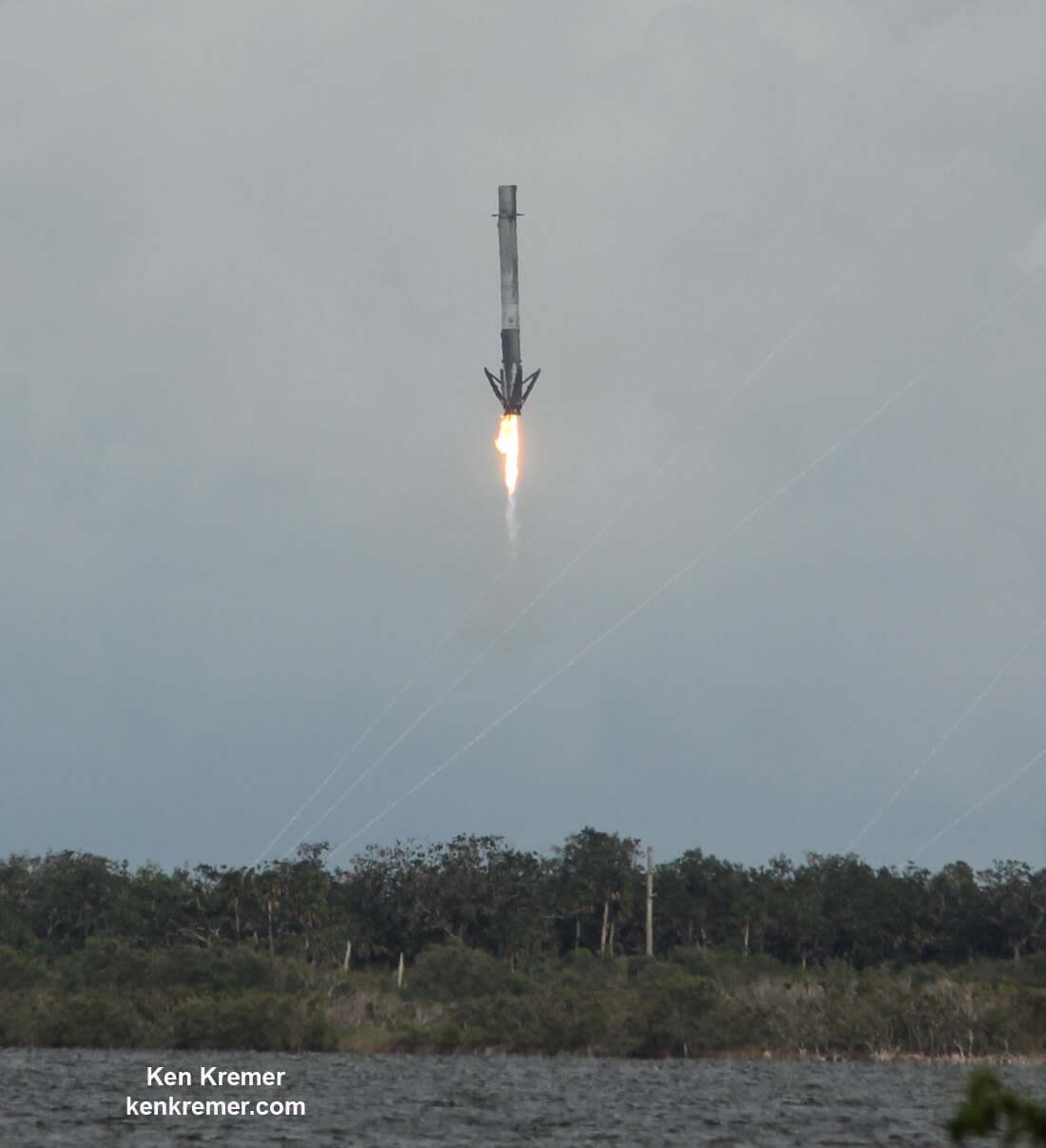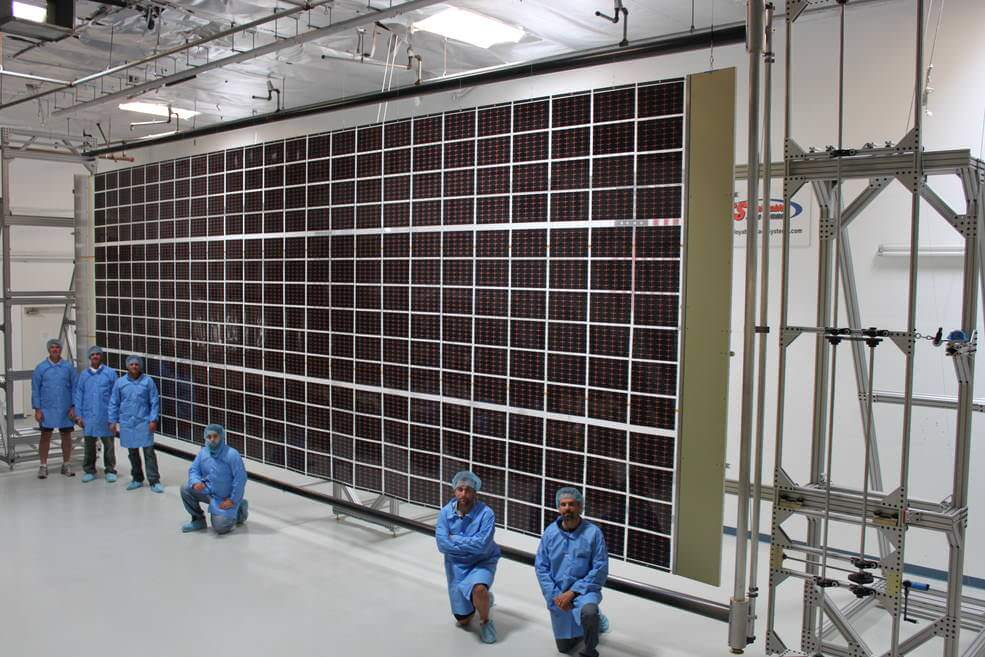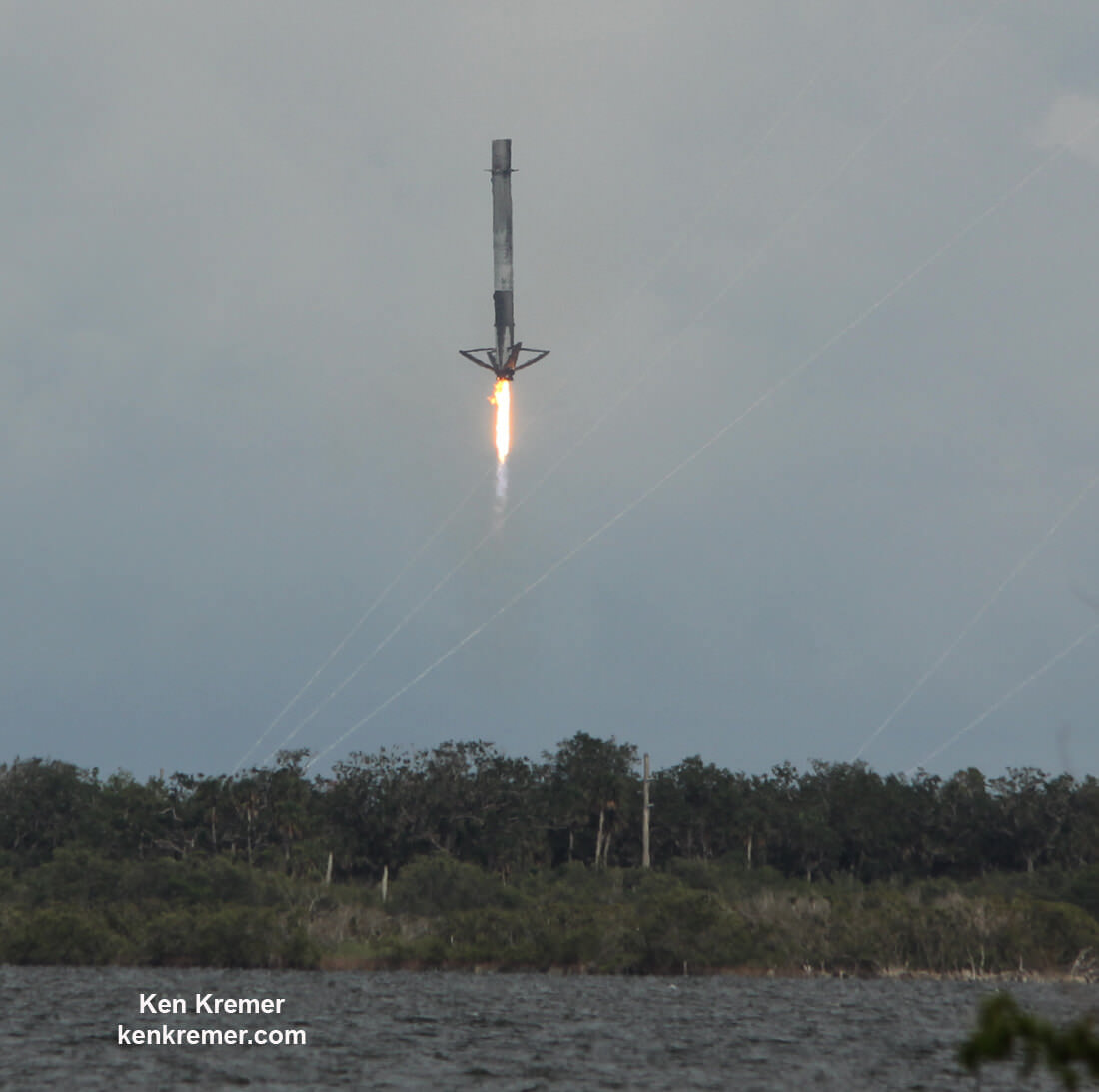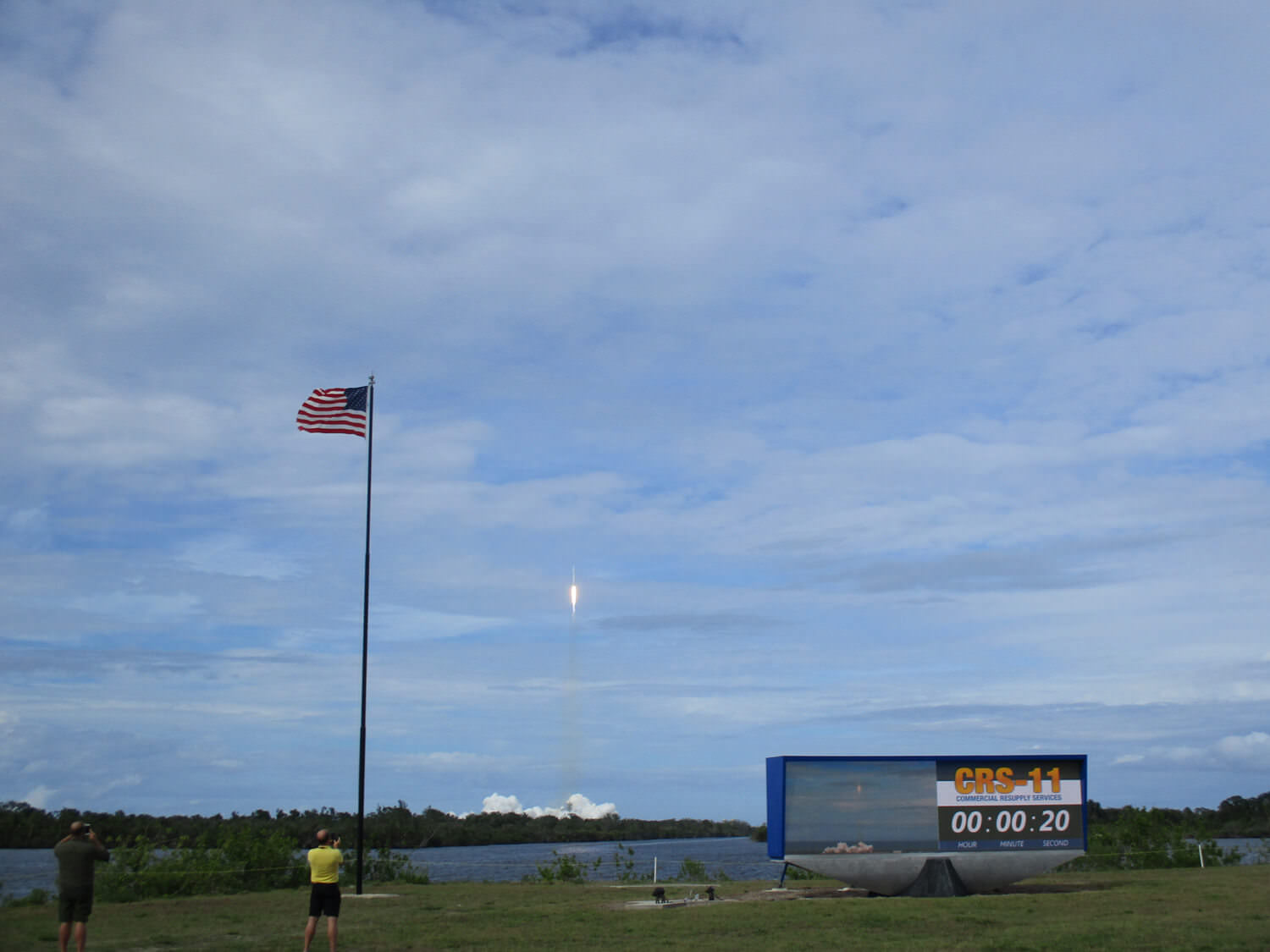
Before the year is out, the long awaited debut launch of the triple barreled Falcon Heavy rocket may at last be in sight says SpaceX CEO and founder Elon Musk, as he forthrightly acknowledges it comes with high risk and released a stunning launch and landing animation earlier today, Aug. 4.
After years of painstaking development and delays, the inaugural blastoff of the SpaceX Falcon Heavy is currently slated for November 2017 from NASA’s Kennedy Space Center in Florida, according to Musk.
“Falcon Heavy maiden launch this November,” SpaceX CEO and billionaire founder Elon Musk tweeted last week.
“Lot that can go wrong in the November launch …,” Musk said today on Instagram, downplaying the chances of complete success.
And to whet the appetites of space enthusiasts worldwide, just today Musk also published a one minute long draft animation illustrating the Falcon Heavy triple booster launch and how the individual landings of the trio of first stage booster cores will take place – nearly simultaneously.
https://www.instagram.com/p/BXXiVWFgphb/
Video Caption: SpaceX Falcon Heavy launch from KSC pad 39A pad and first stage booster landings. Credit: SpaceX
“Side booster rockets return to Cape Canaveral,” explains Musk on twitter. “Center lands on droneship.”
The two side boosters will be recycled from prior Falcon 9 launches and make precision guided propulsive, upright ground soft landings back at Cape Canaveral Air Force Station, Florida. Each booster is outfitted with a quartet of grid fins and landing legs. The center core is newly built and heavily modified.
“Sides run high thrust, center is lower thrust until sides separate & fly back. Center then throttles up, keeps burning & lands on droneship. If we’re lucky!” Musk elaborated.
The center booster will touch down on an ocean going droneship prepositioned in the Atlantic Ocean some 400 miles (600 km) off of Florida’s east coast.
To date SpaceX first stages from KSC launches have touched down either on land at Landing Zone-1 (LZ-1) at the Cape or at sea on the “Of Course I Still Love You” droneship barge (OCISLY).
The launch of the extremely complicated Falcon Heavy booster with 27 first stage Merlin 1D engines also comes associated with a huge risk – and he hopes that it at least rises far enough off the ground to minimize the chances of damage to the historic pad 39A at the Kennedy Space Center.
“There’s a lot of risk associated with Falcon Heavy, a real good chance that that vehicle does not make it to orbit,” Musk said recently while speaking at the International Space Station Research and Development Conference in Washington, D.C. on July 19.
“I want to make sure to set expectations accordingly. I hope it makes it far enough beyond the pad so that it does not cause pad damage. I would consider even that a win, to be honest.”
Musk originally proposed the Falcon Heavy in 2011 and targeted a maiden mission in 2013.
Whenever it does launch, the Falcon Heavy will become the world’s most powerful rocket.
“I think Falcon Heavy is going to be a great vehicle,” Musk stated. “There’s just so much that’s really impossible to test on the ground, and we’ll do our best.
“Falcon Heavy requires the simultaneous ignition of 27 orbit-class engines. There’s a lot that can go wrong there.”
Designing and building Falcon Heavy has proven to be far more difficult than Musk ever imagined, and the center booster had to be significantly redesigned.
“It actually ended up being way harder to do Falcon Heavy than we thought,” Musk explained.
“At first it sounds real easy! You just stick two first stages on as strap-on boosters. How hard can that be?” But then everything changes. All the loads change, aerodynamics totally change. You’ve tripled the vibration and acoustics. You sort of break the qualification levels on so much of the hardware.”
“The amount of load you’re putting through that center core is crazy because you’ve got two super-powerful boosters also shoving that center core. So we had to redesign the whole center core airframe,” Musk added. “It’s not like the Falcon 9 – because it’s got to take so much load. Then you’ve got separation systems.”
Due to the high risk, there will be no payload from a paying customer housed inside the nose cone atop the center core. Only a dummy payload will be installed on the maiden mission.
However future Falcon Heavy missions have been manifested with commercial and science payloads.
Musk also hopes to launch a pair of paying private astronauts on a trip around the Moon and back as soon as 2018 while journeying inside a Crew Dragon spacecraft with the Falcon Heavy – similar to what his company is developing for NASA for commercial ferry missions to low Earth orbit (LEO) and the International Space Station (ISS).
Falcon Heavy will blast off with about twice the thrust of the Delta IV Heavy, currently the worlds most powerful rocket. The United Launch Alliance (ULA) Delta IV Heavy (D4H) has been the world’s mightiest rocket since the retirement of NASA’s Space Shuttles in 2011.
The Falcon Heavy sports about 2/3 the liftoff thrust of NASA’s Saturn V manned moon landing rockets – last launched in the 1970s.
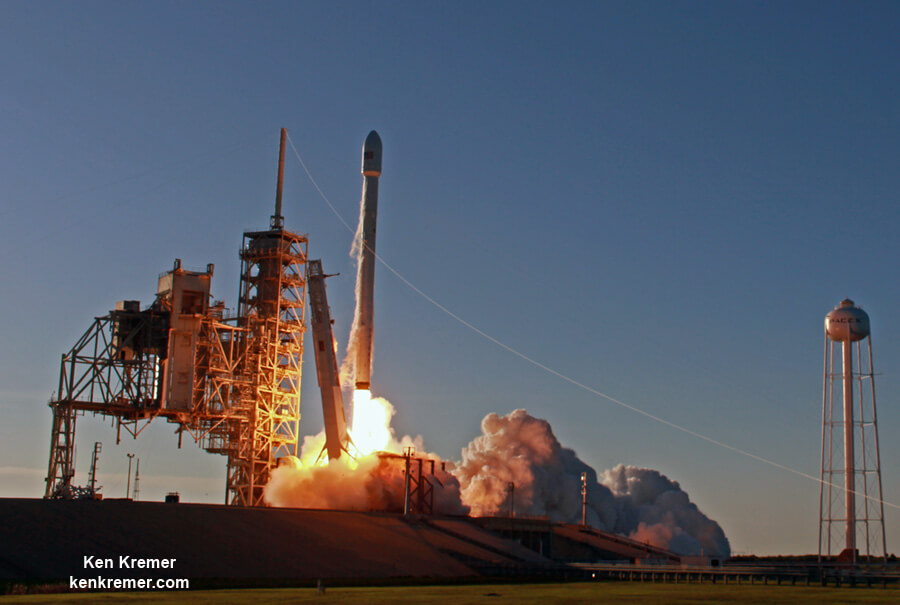
The Falcon Heavy is comprised of three Falcon 9 cores. The Delta IV Heavy is comprised of three Delta Common Core Boosters.
The combined trio of Falcon 9 cores will generate about 5.1 million pounds of liftoff thrust upon ignition from Launch Complex 39A at the Kennedy Space Center in Florida.
“With the ability to lift into orbit over 54 metric tons (119,000 lb)–a mass equivalent to a 737 jetliner loaded with passengers, crew, luggage and fuel–Falcon Heavy can lift more than twice the payload of the next closest operational vehicle, the Delta IV Heavy, at one-third the cost,” according to the SpaceX website.
“The nice thing is when you fully optimize it, it’s about two-and-a-half times the payload capability of a Falcon 9,” Musk notes. “It’s well over 100,000 pounds to LEO of payload capability, 50 tons. It can even get up a little higher than that if optimized.”
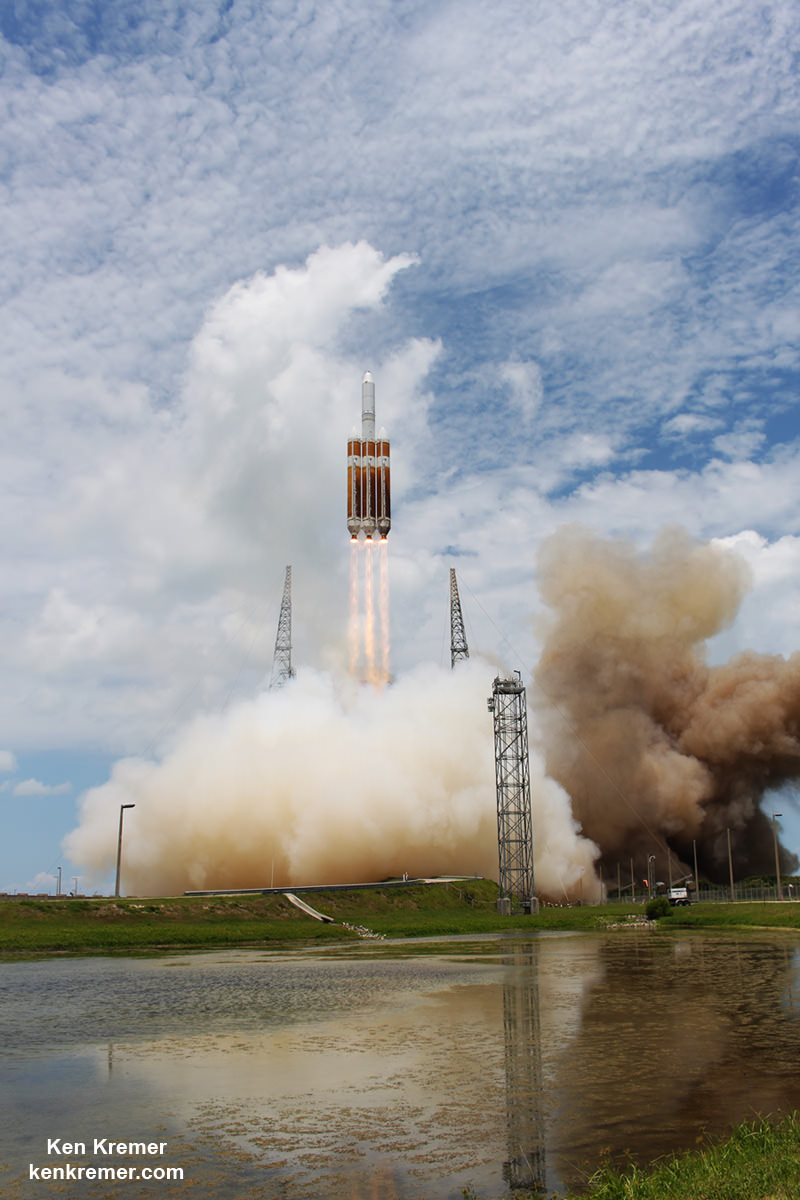
The two stage Falcon Heavy stands more than 229.6 feet (70 meters) tall and is 39.9 feet wide (12.2 meters).
It weighs more than 3.1 million pounds (1.4 million kilograms).
Like the Falcon 9 it will be fueled with liquid oxygen and RP-1 kerosene propellants.
The thunder, power and roar of over 5 million pounds of liftoff thrust from the Falcon Heavy’s 27 engines is absolutely certain to be a thrilling, earth-shaking space spectacular !! Thus placing it in a class of its own unlike any US launch since NASA’s Saturn V and Space Shuttles rocketed to the high frontier from the same pad.
“I encourage people to come down to the Cape to see the first Falcon Heavy mission,” Musk said. “It’s guaranteed to be exciting.”
But before the Falcon Heavy can actually be rolled up to launch position at pad 39A, SpaceX must first complete repairs and refurbishment to nearby pad 40.
That Cape pad was heavily damaged nearly a year ago during a catastrophic launch pad explosion that took place in Sept. 2016 during a routine prelaunch fueling and static fire engine test of a Falcon 9 rocket with the Amos-6 commercial comsat payload bolted on top.
Pad 40 must achieve operational launch status again before SpaceX can commit to the Falcon Heavy launches at Pad 39A. Workers will also need to finish construction work at pad 39A to support the Heavy launches.
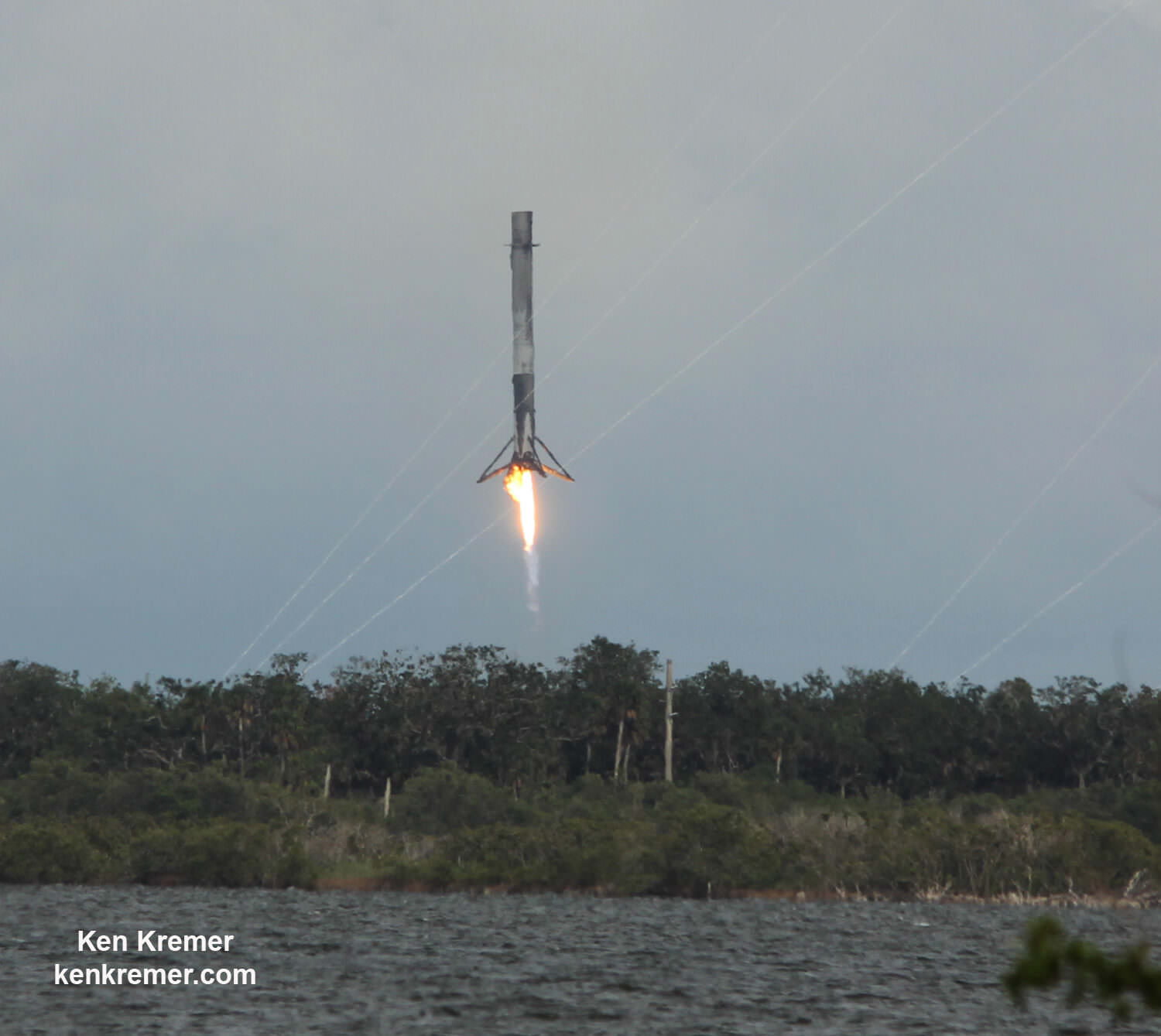
To date SpaceX has successfully demonstrated the recovery of thirteen boosters by land and sea.
Furthermore SpaceX engineers have advanced to the next step and successfully recycled, reflown and relaunched two ‘flight-proven first stages this year in March and June of 2017 from the Kennedy Space Center in Florida involving the SES-10 and BulgariaSat-1 launches respectively.
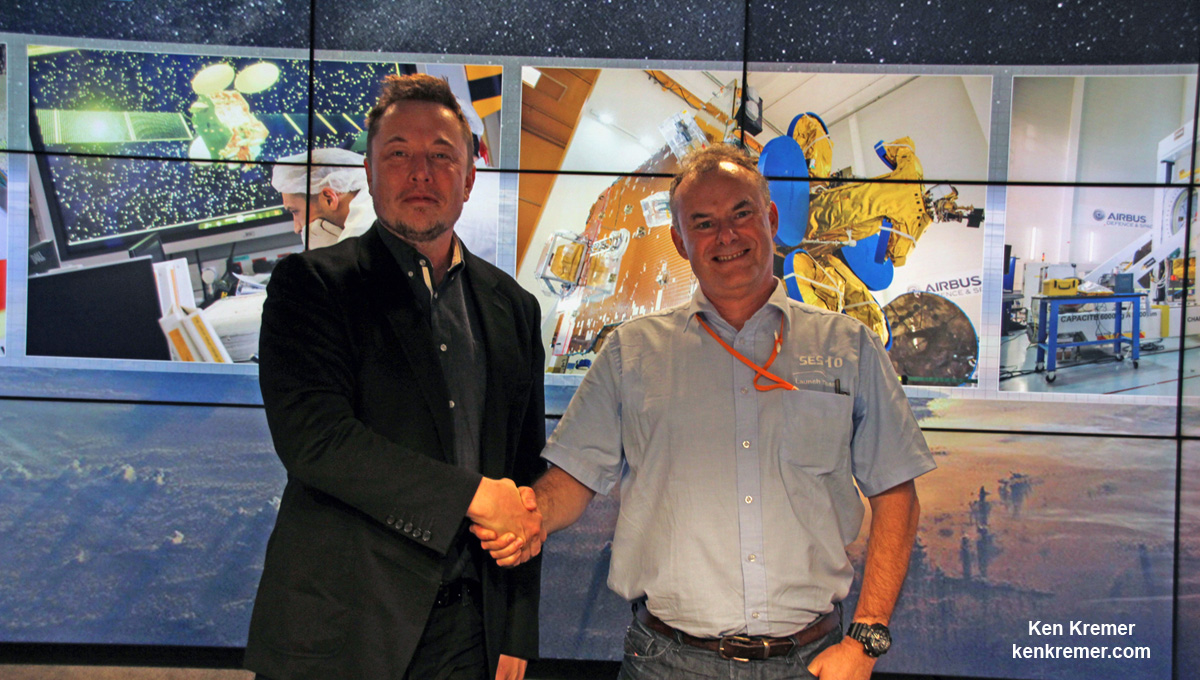
The next SpaceX Falcon 9 launch is slated for Aug. 13 on the NASA contracted CRS-12 resupply mission to the ISS.
Watch for Ken’s onsite space mission reports direct from the Kennedy Space Center and Cape Canaveral Air Force Station, Florida.
Stay tuned here for Ken’s continuing Earth and Planetary science and human spaceflight news.
